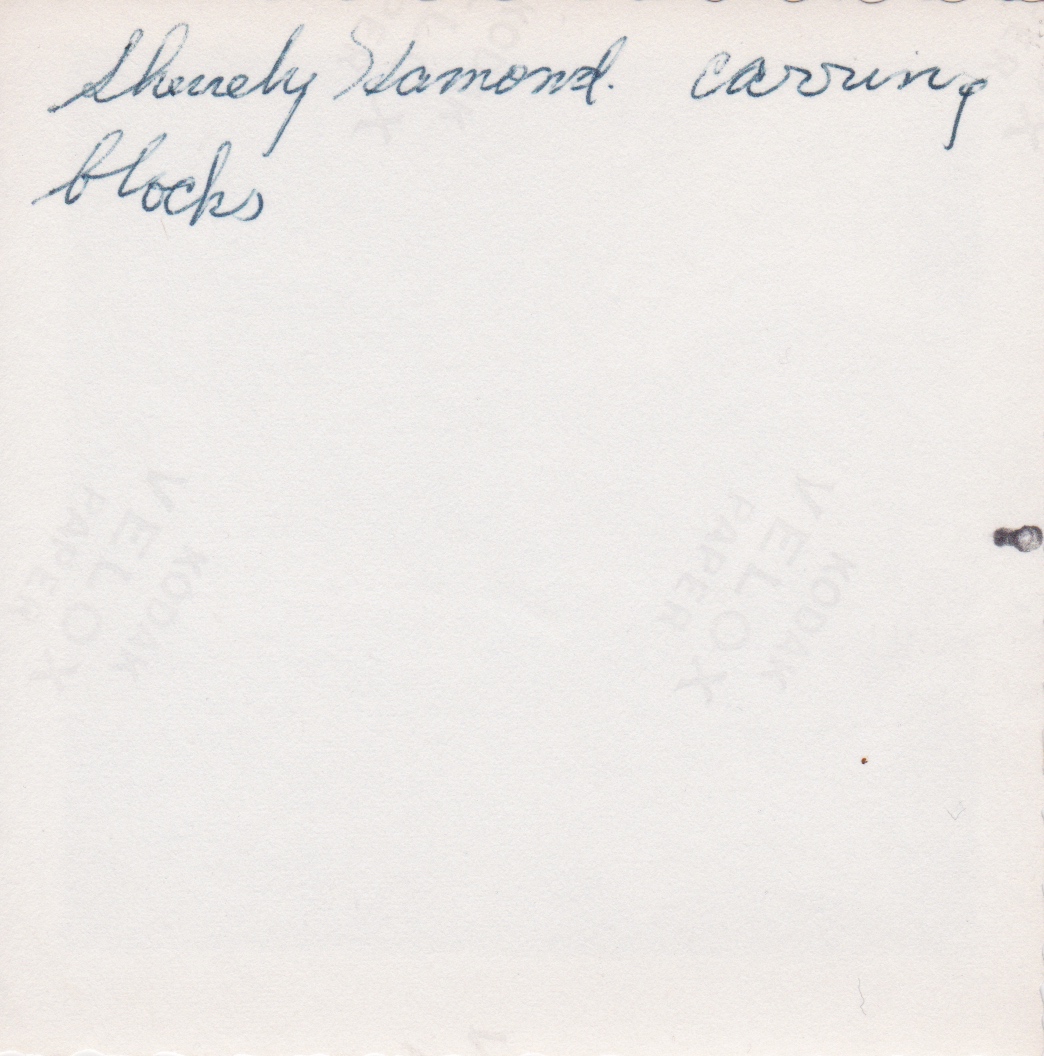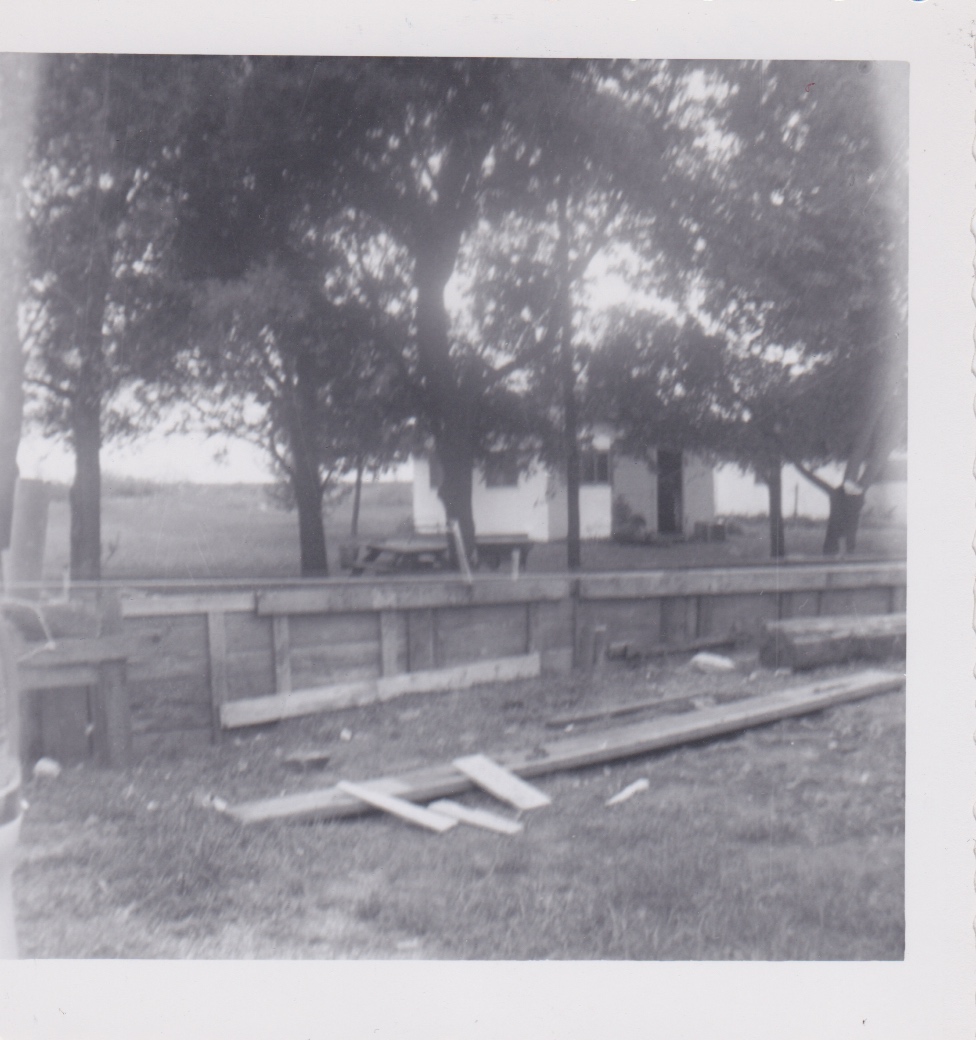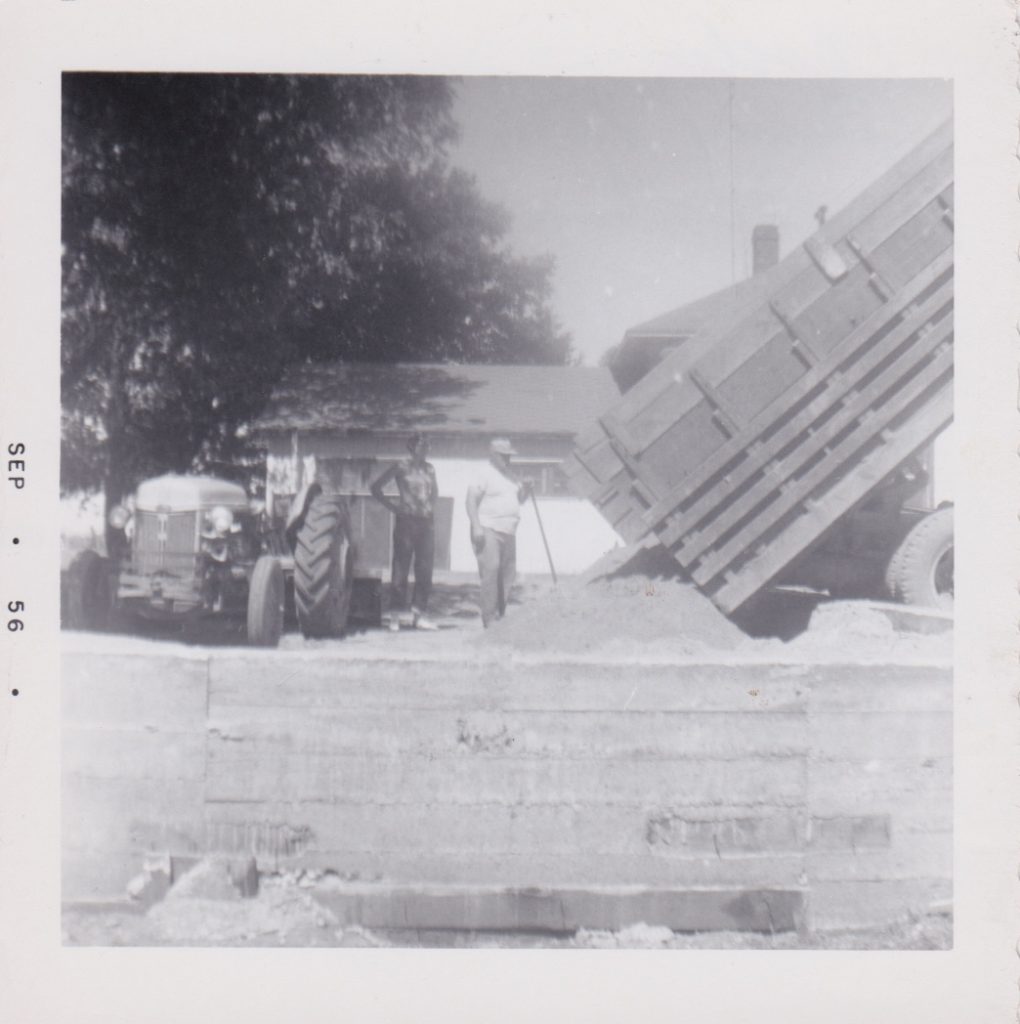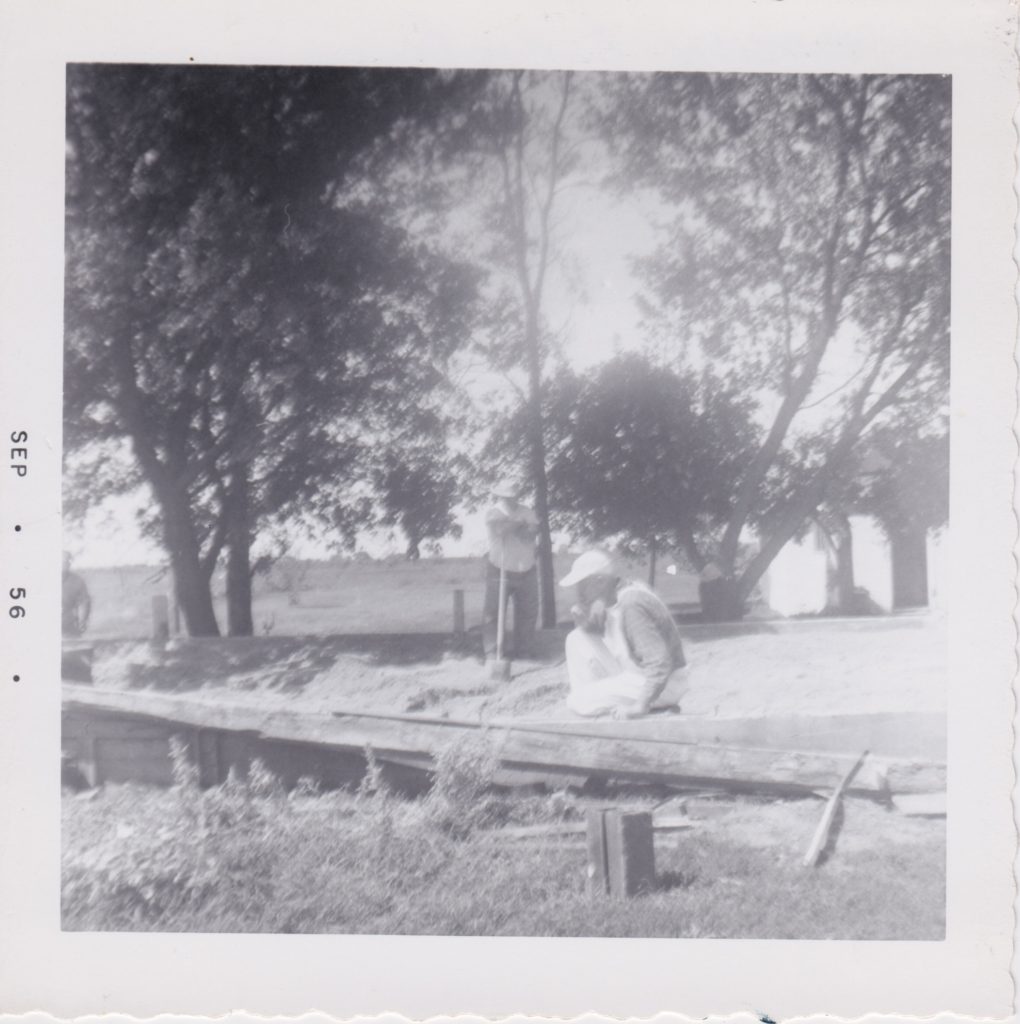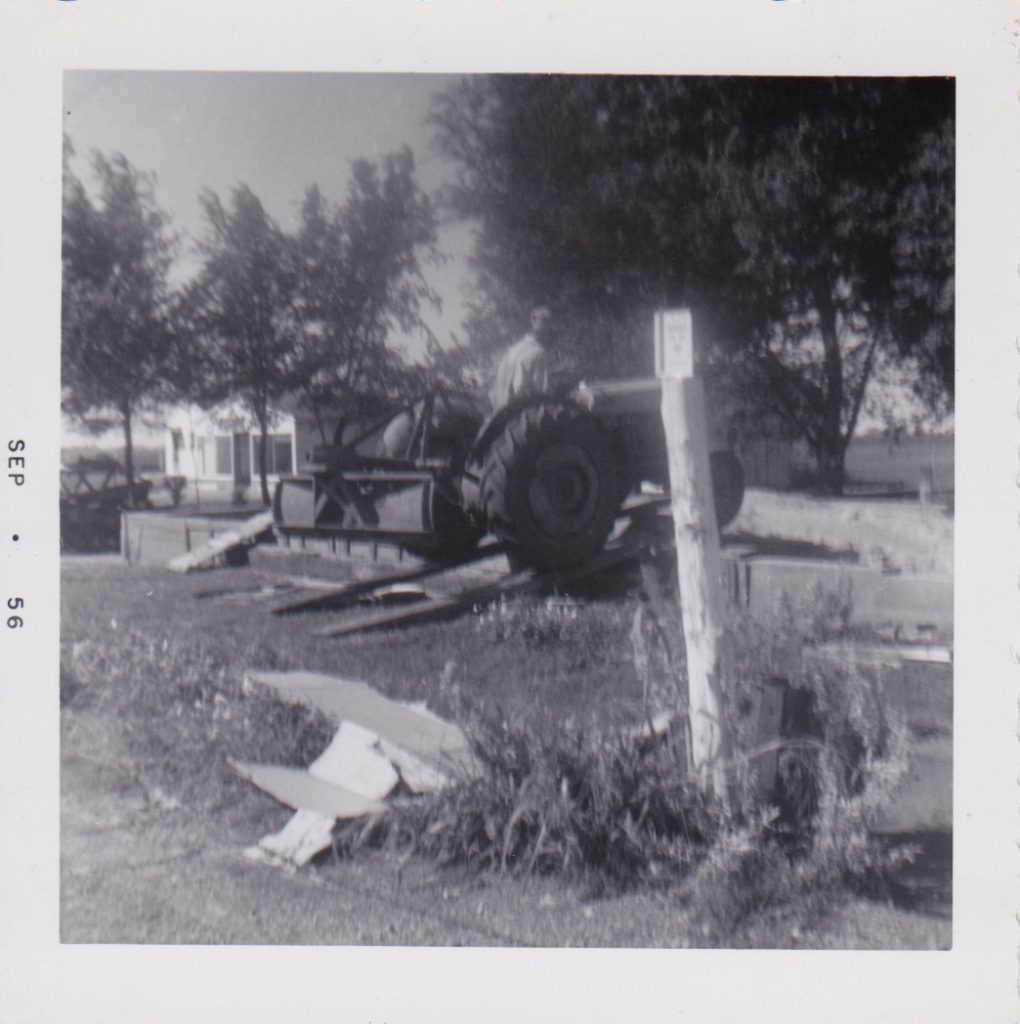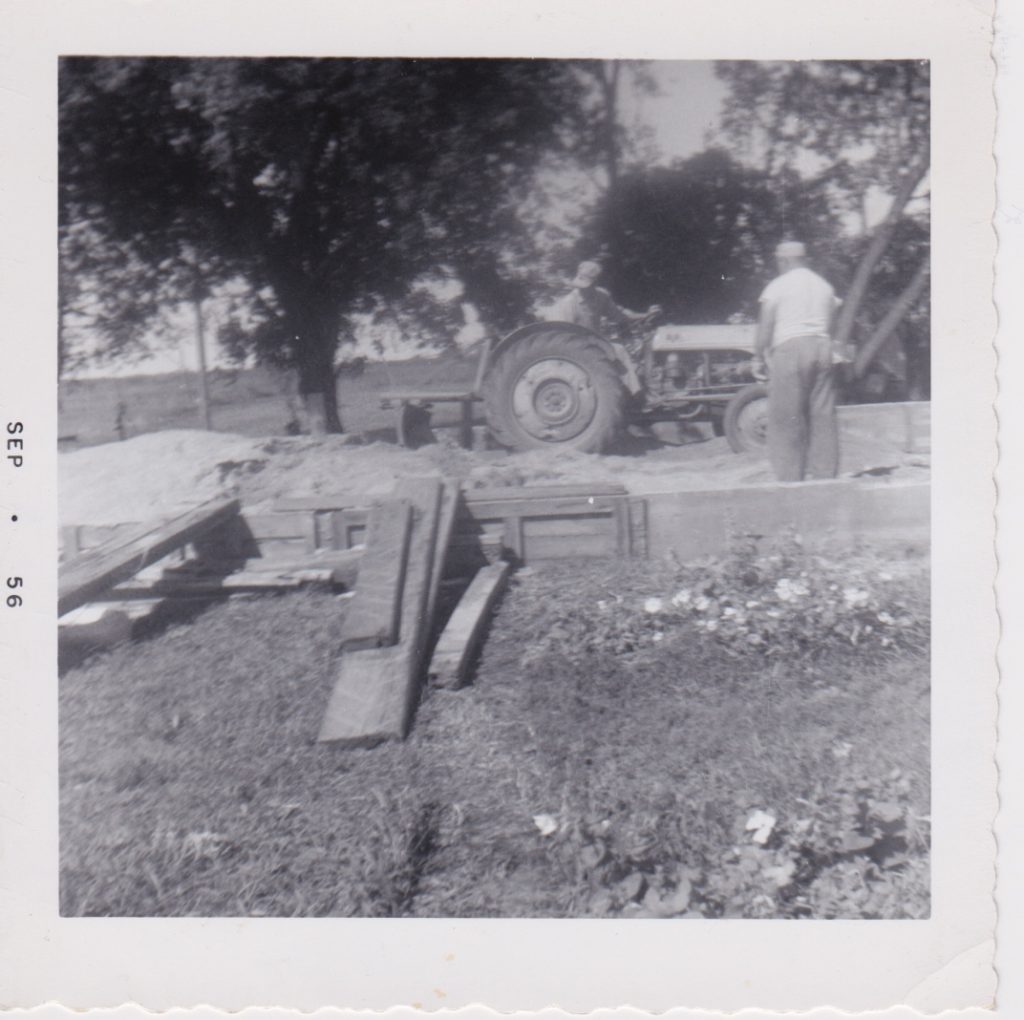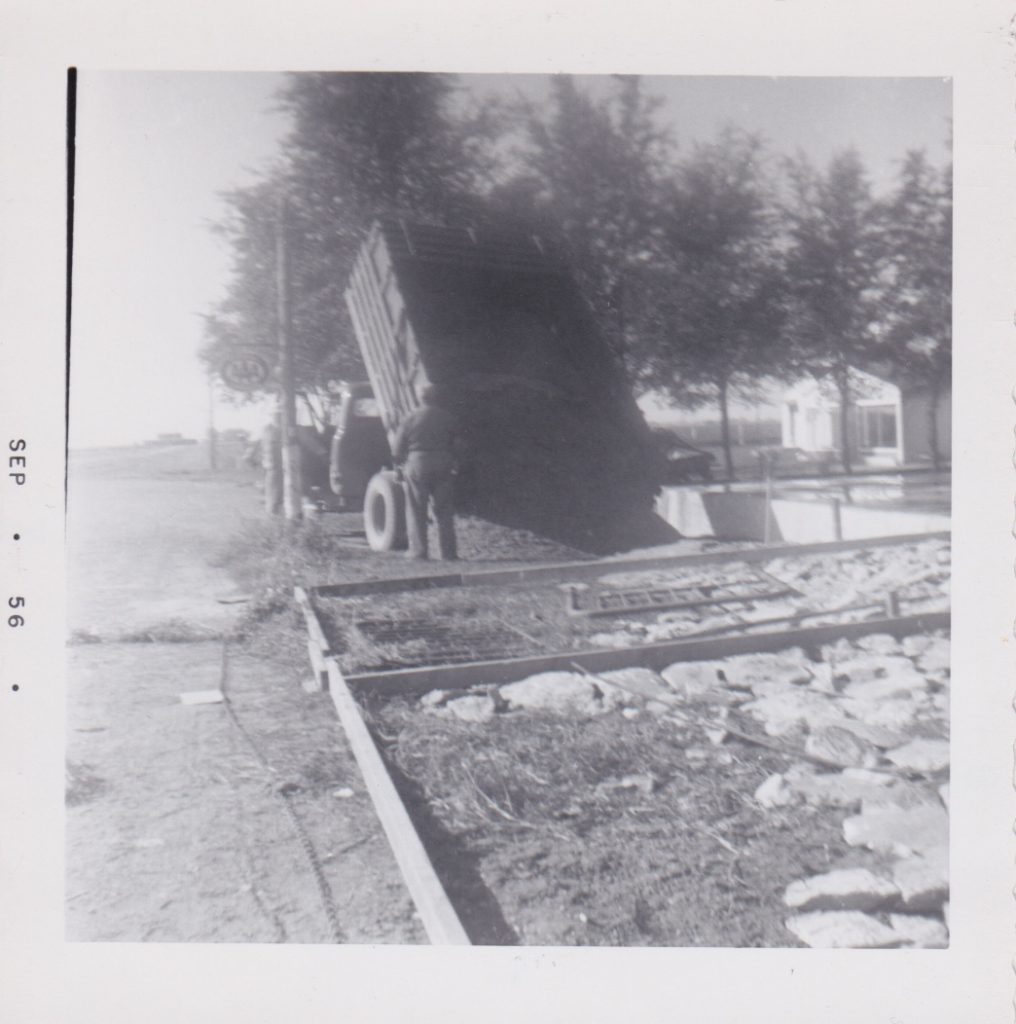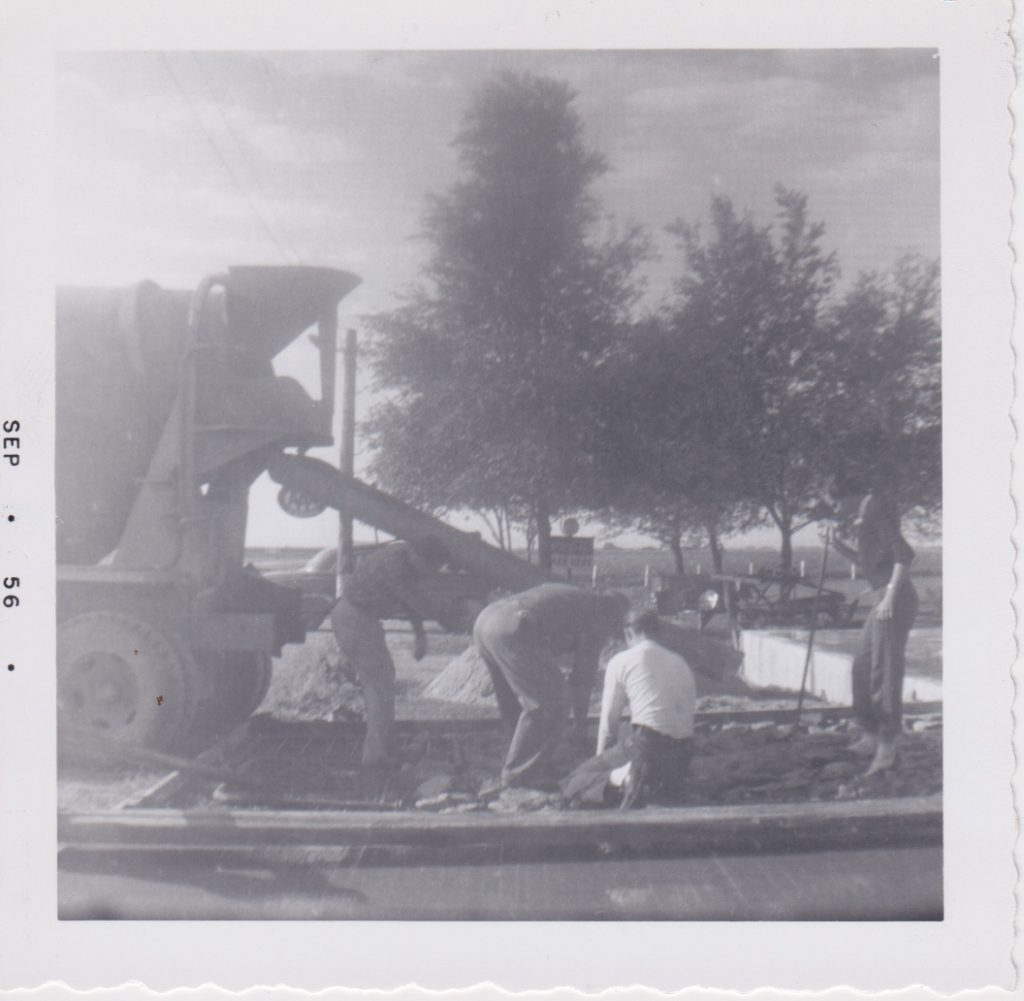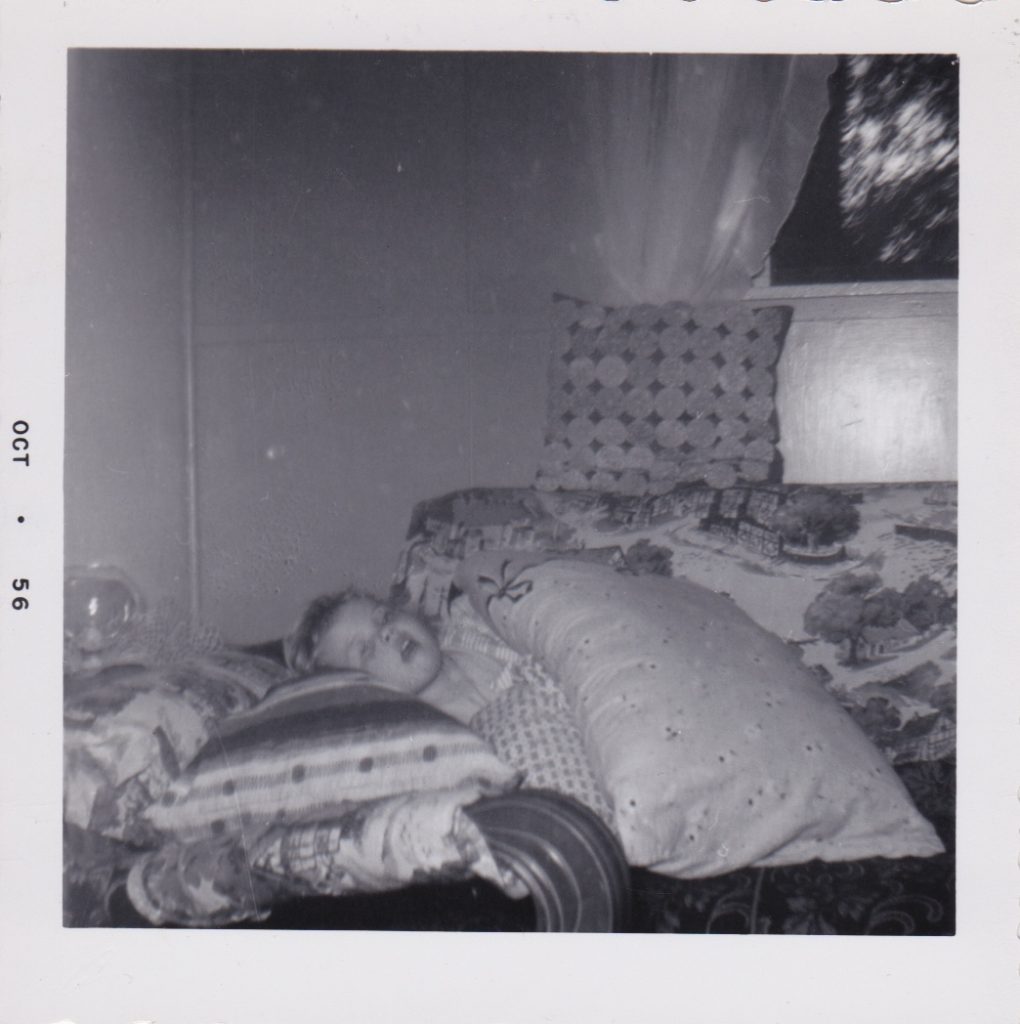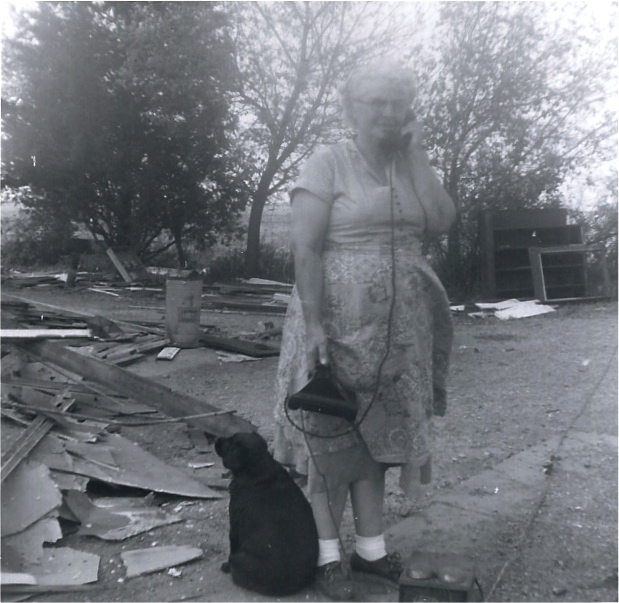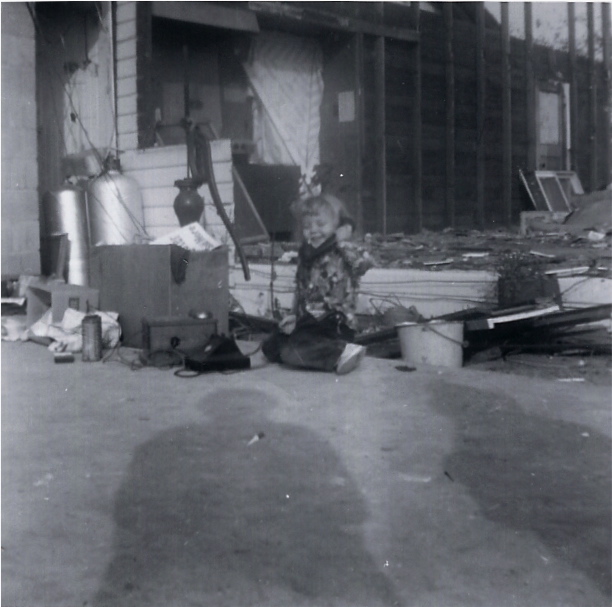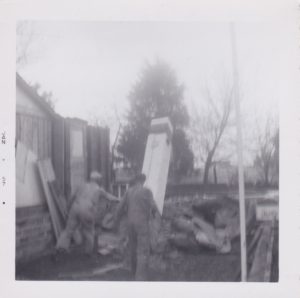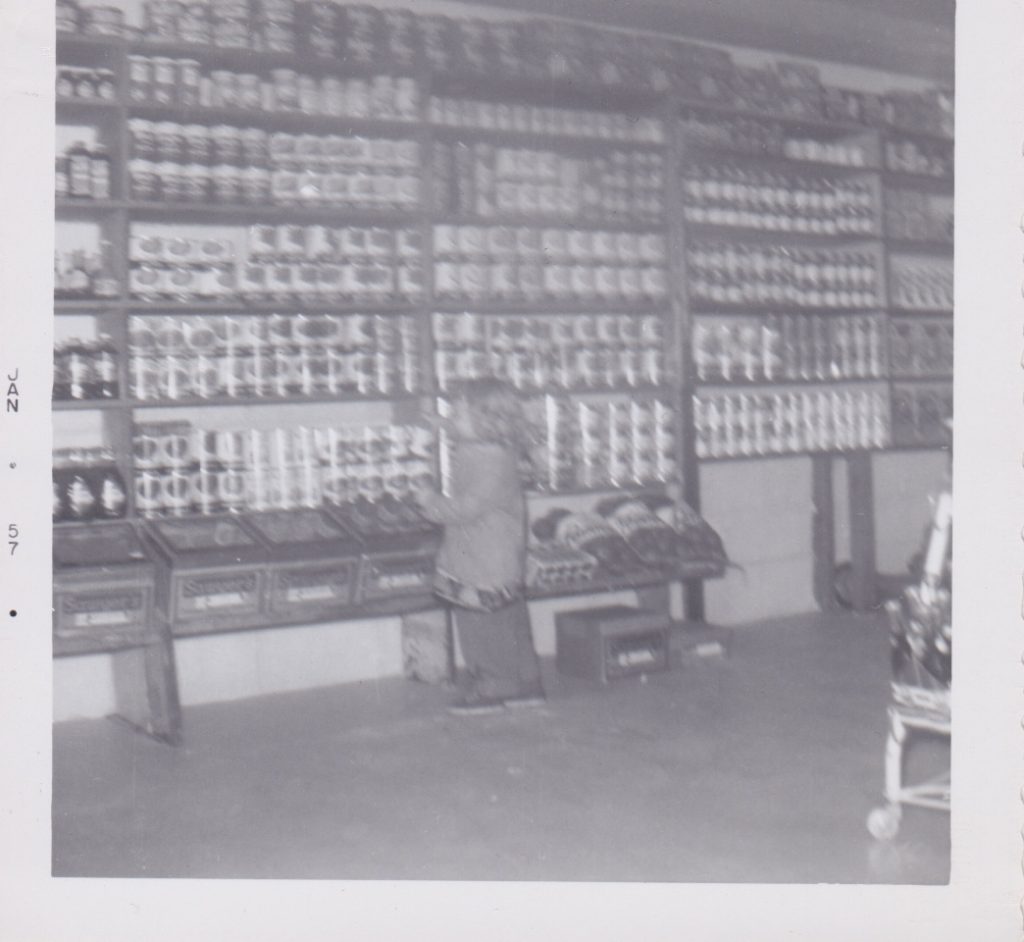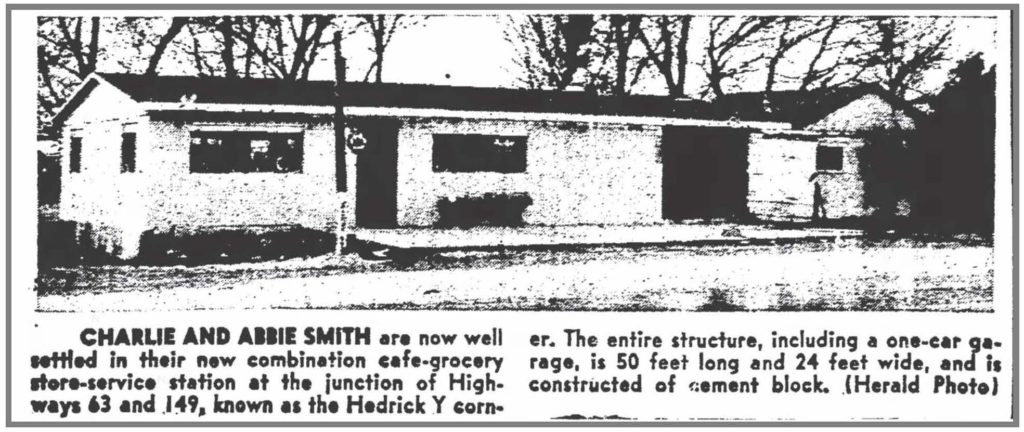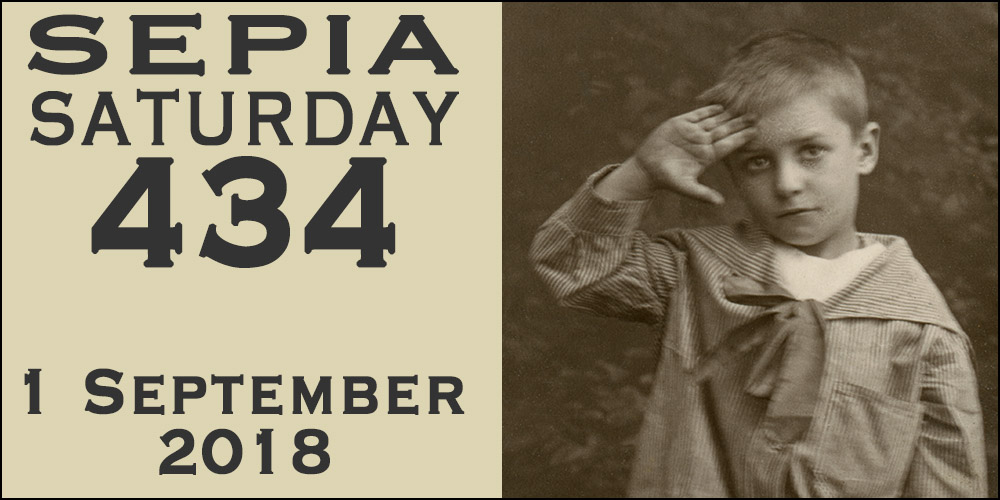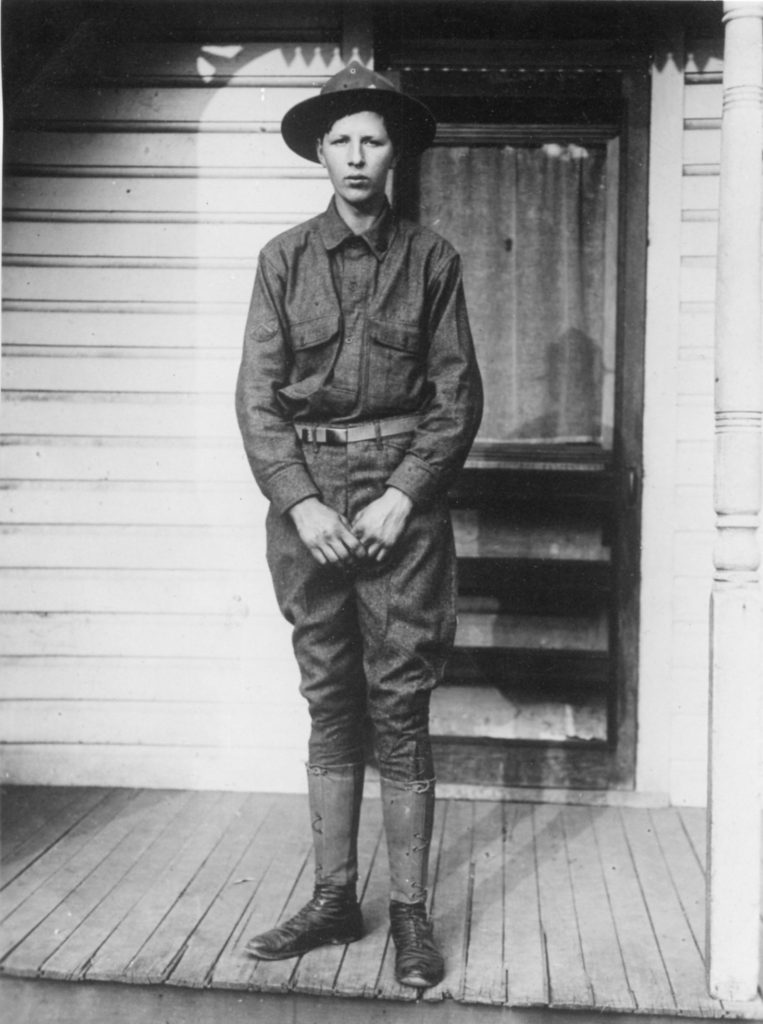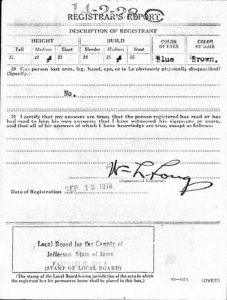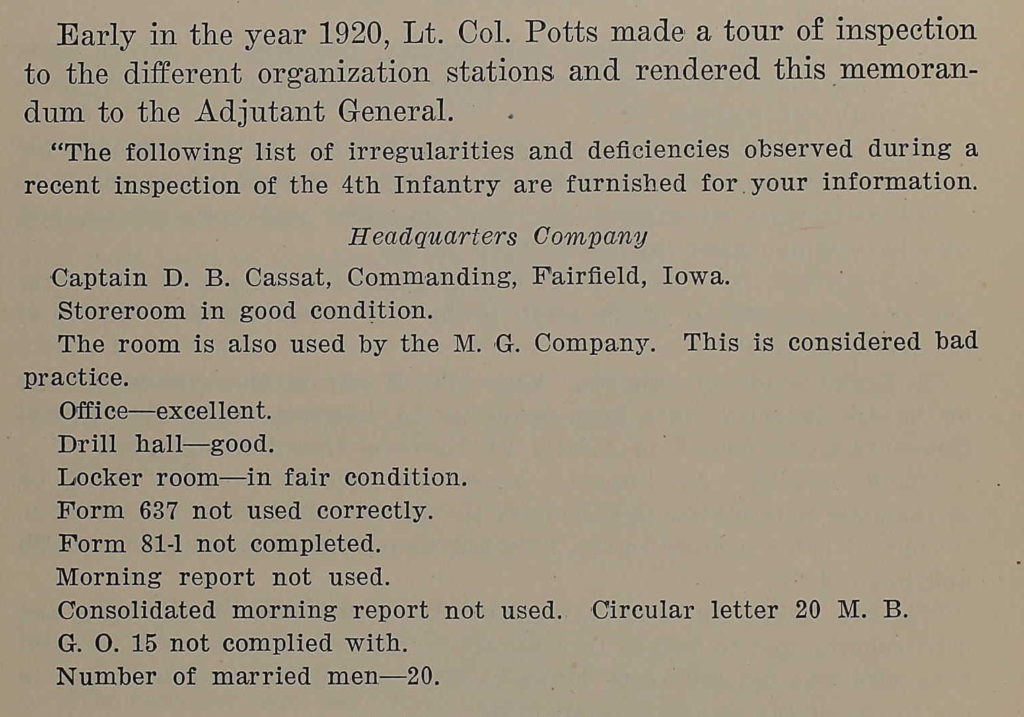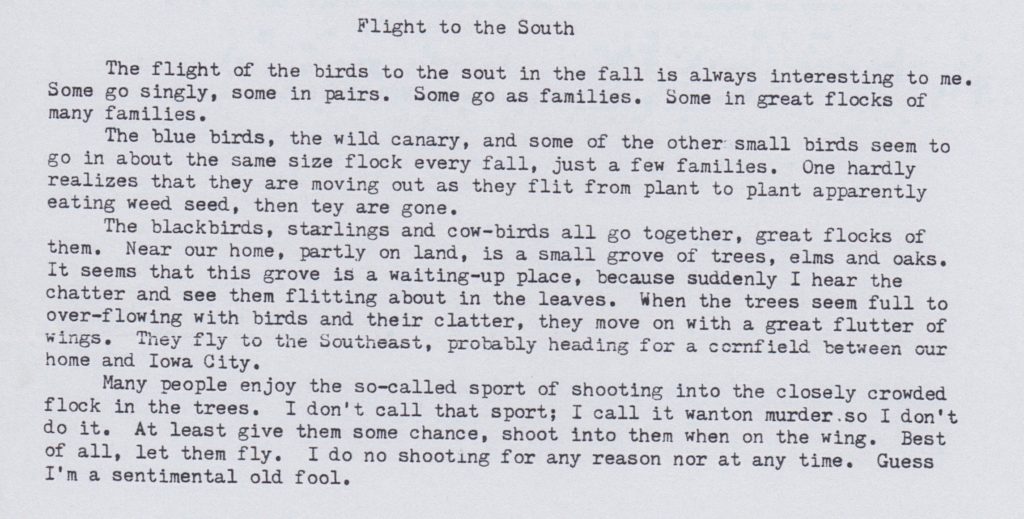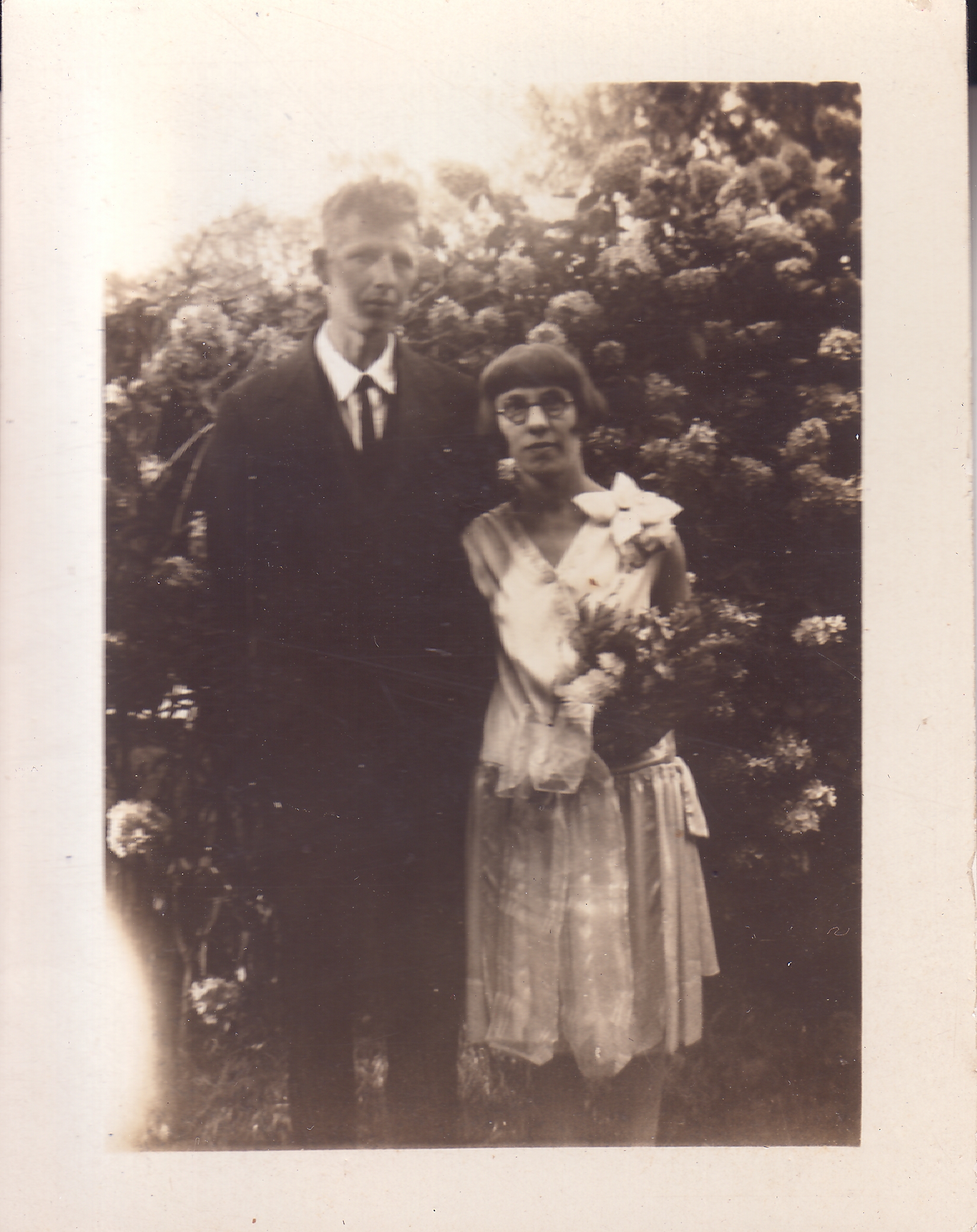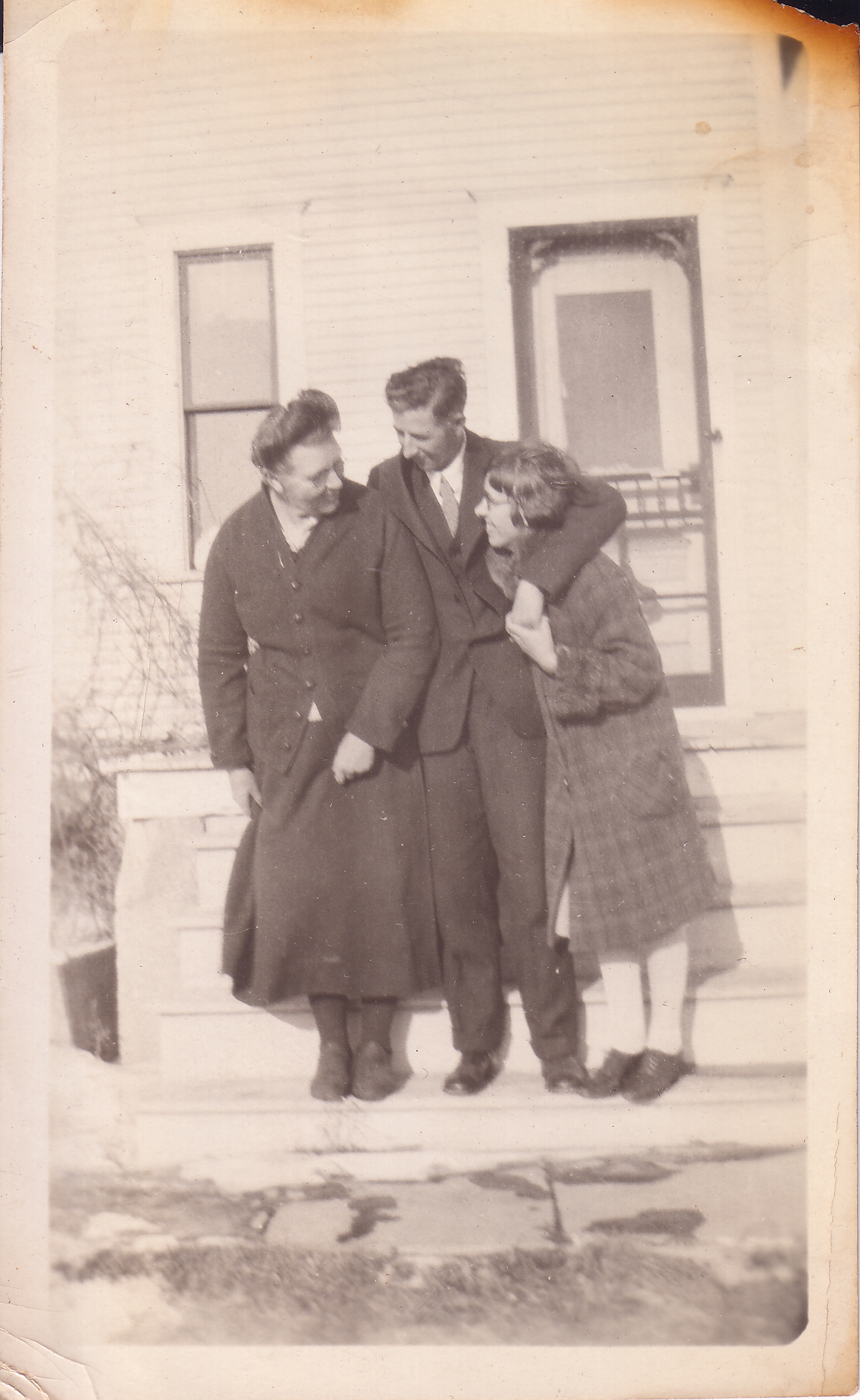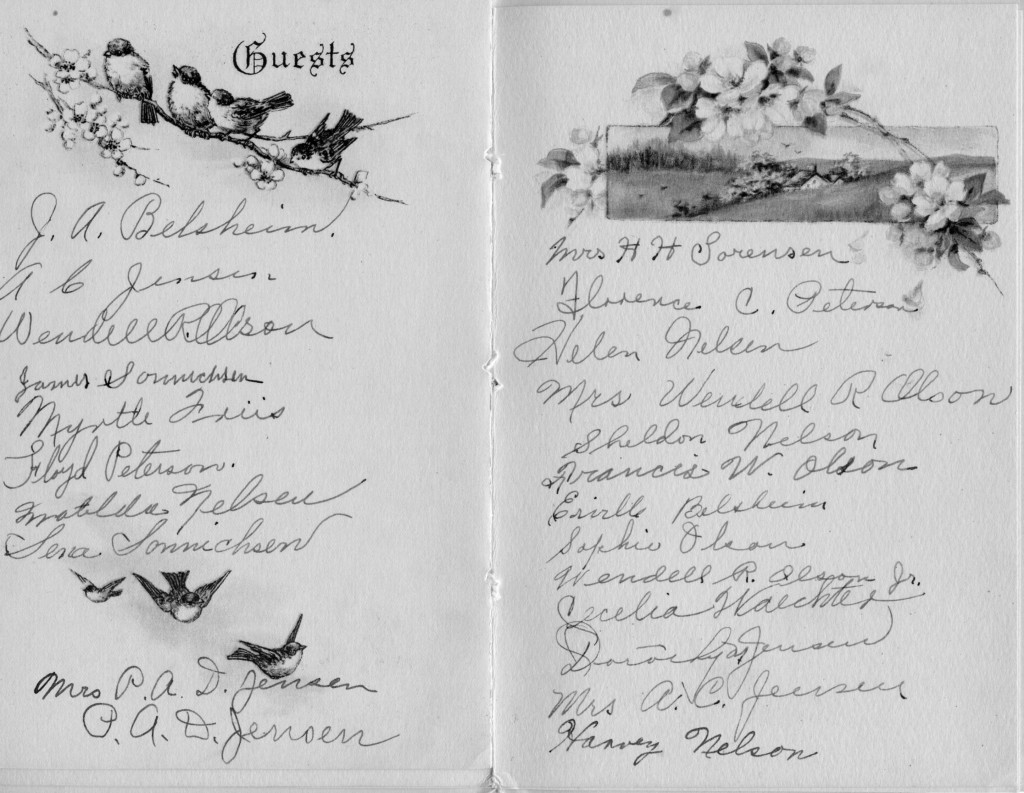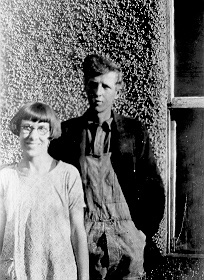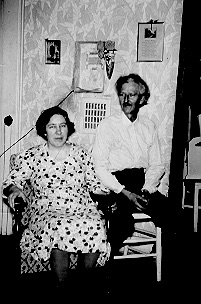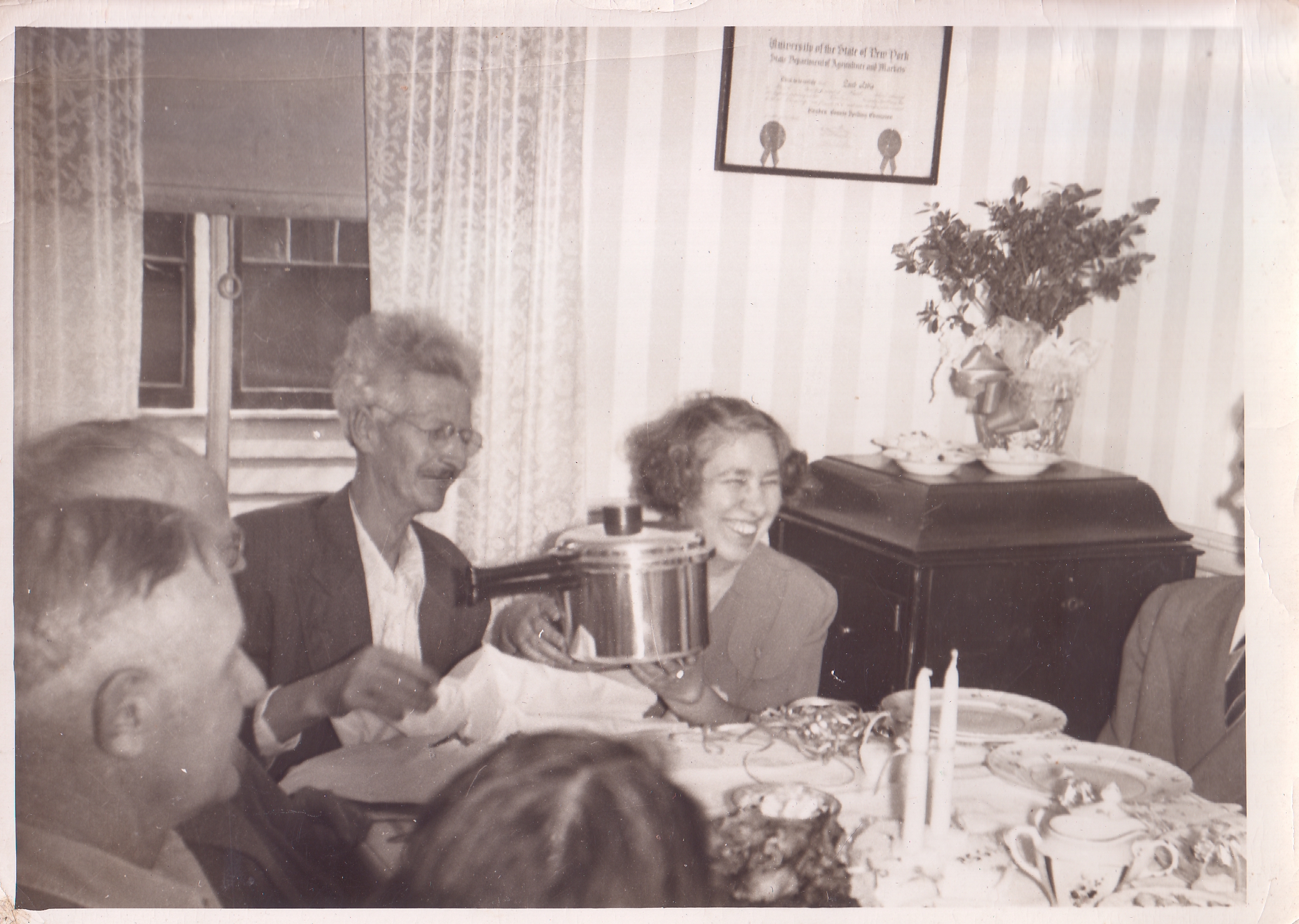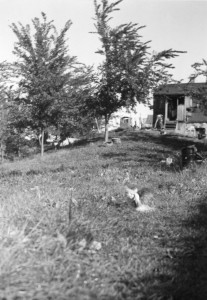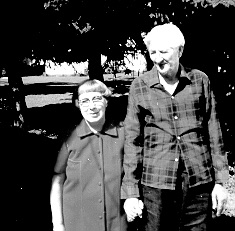Sepia Saturday provides bloggers with an opportunity to share their history through the medium of photographs. Historical photographs of any age or kind become the launchpad for explorations of family history, local history and social history in fact or fiction, poetry or prose, words or further images. If you want to play along, sign up to the link, try to visit as many of the other participants as possible, and have fun.
Granted, it says blocks, not bricks, but let’s not be picky. I don’t know who Sherrely (?) is, but here she is carrying a cement block.
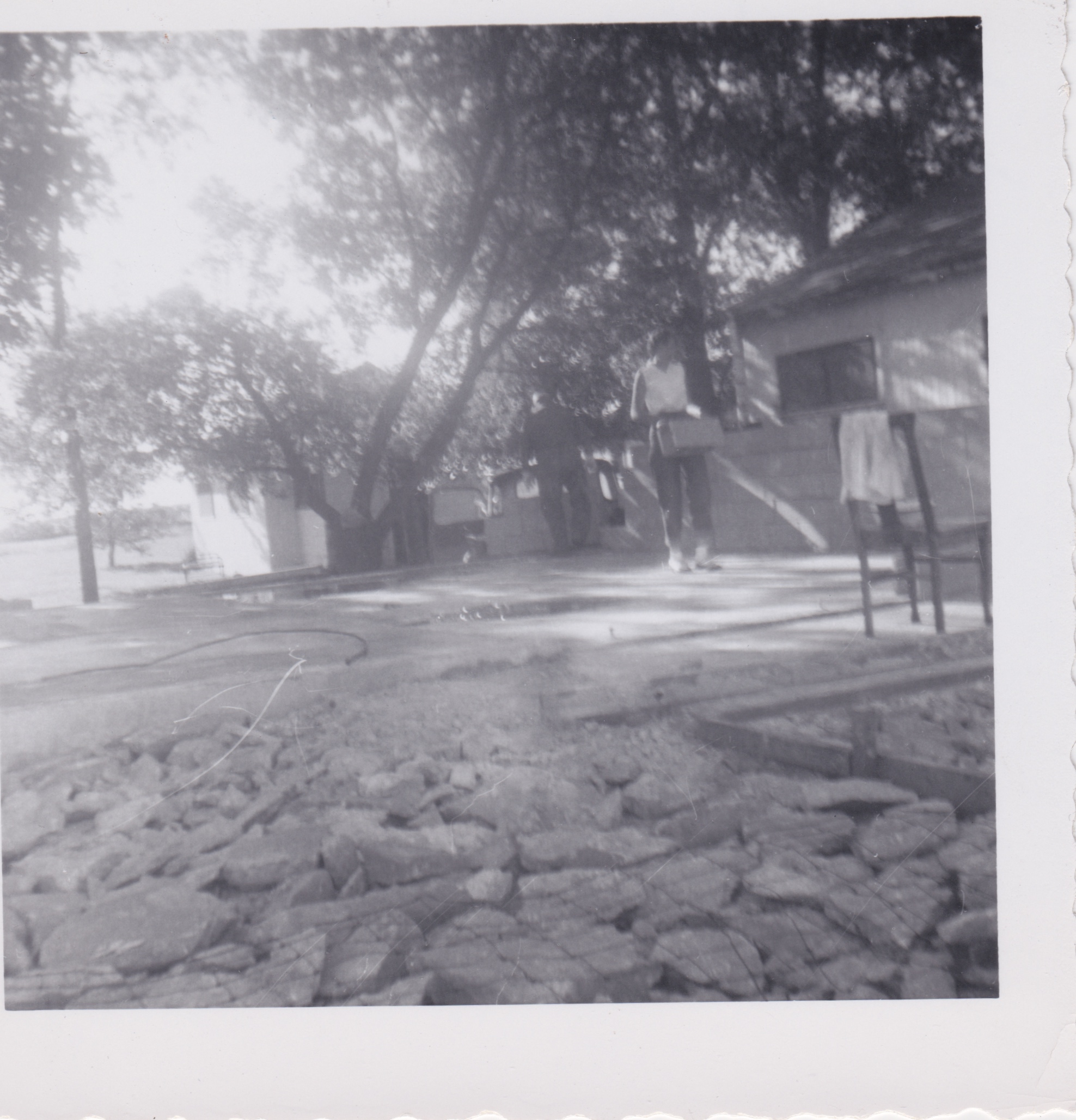
Next …

My grandfather unloading blocks from the back of a pickup truck.
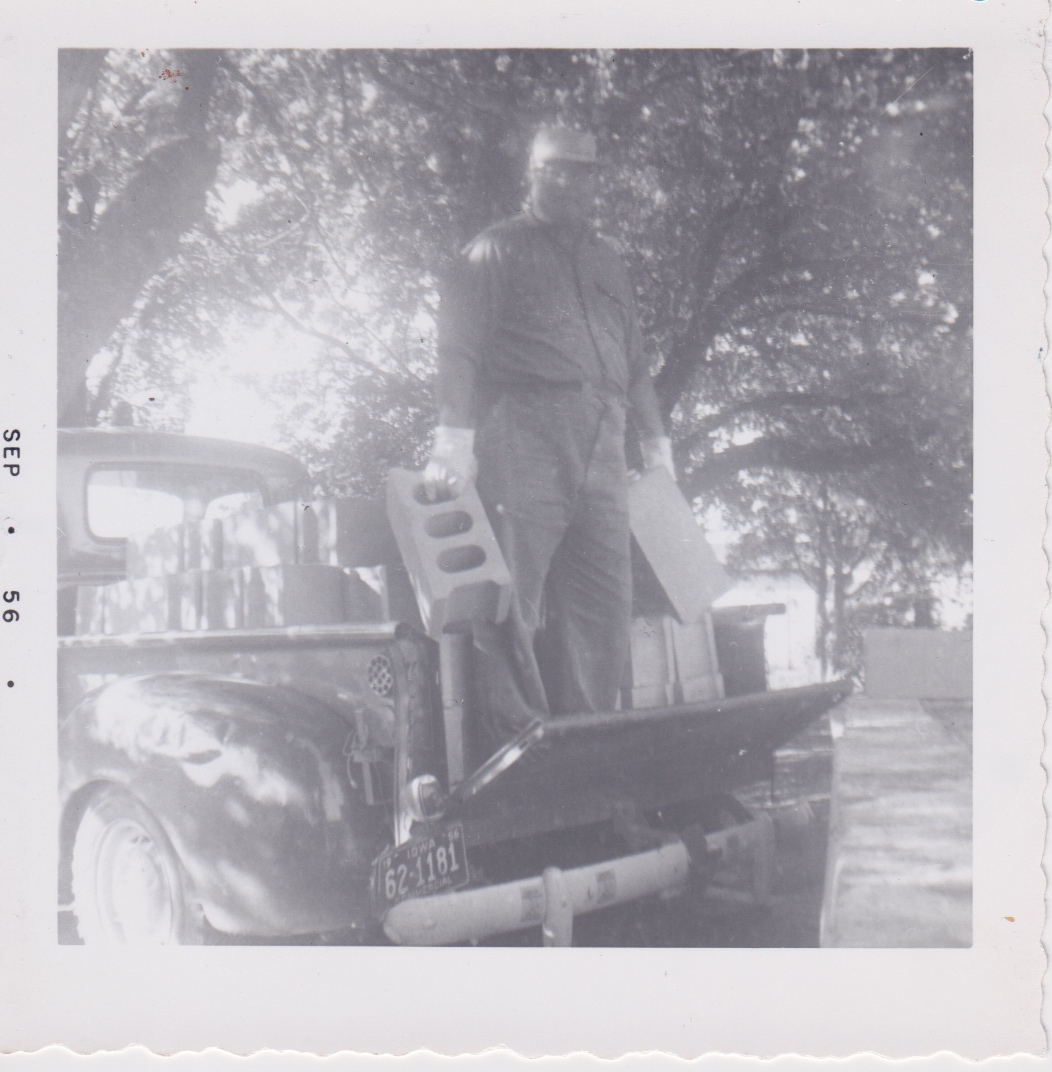
I believe I have successfully matched the theme. I could stop here, but I’ll try to piece together a stack of photos from this time and place.
The photographs above were developed in September 1956. The “set” spans August 1956 – February 1957. The location is the junction of highways 63 and 149 in southeastern Iowa. The subject is the construction of a new and improved truck stop owned and operated by my grandparents, Charles and Abbie Smith. My grandmother did a fair job of documenting the event in photographs and I appreciate her effort. She left a few notes, but I wish there were more.
I’ve written about my grandparents’ truck stop and home a couple of times before, all responses to Sepia Saturday prompts, of course!
Charles’ and Abbie’s Place
One Moment Please
Signs of the Times
This is what the place looked like in 1950.
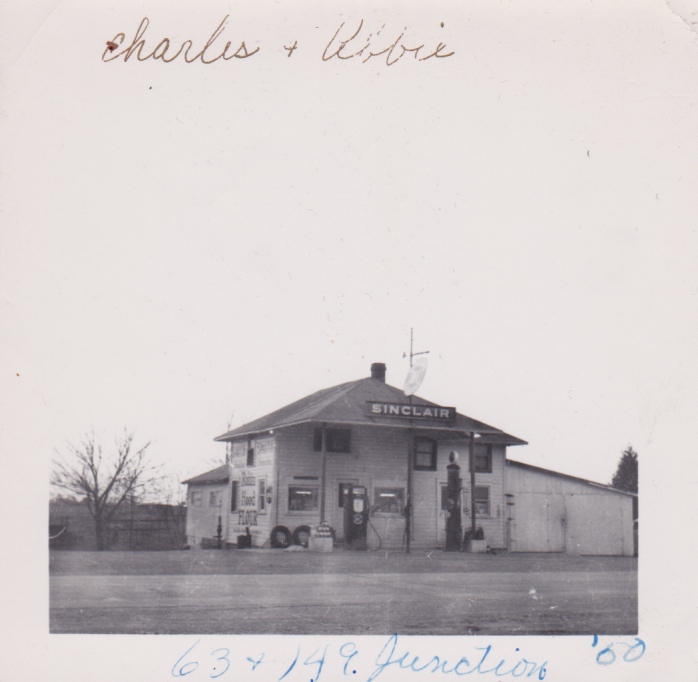
There had been some remodeling prior to 1956, but this project involved tearing down the old building and replacing it with a new one. They constructed the new building adjacent to the old one and continued to live and work in the old one as long as they could.
A photo dated August 17 shows what I suppose is the frame for the foundation.
And one dated August 19 shows me playing in sand that now filled the frame.
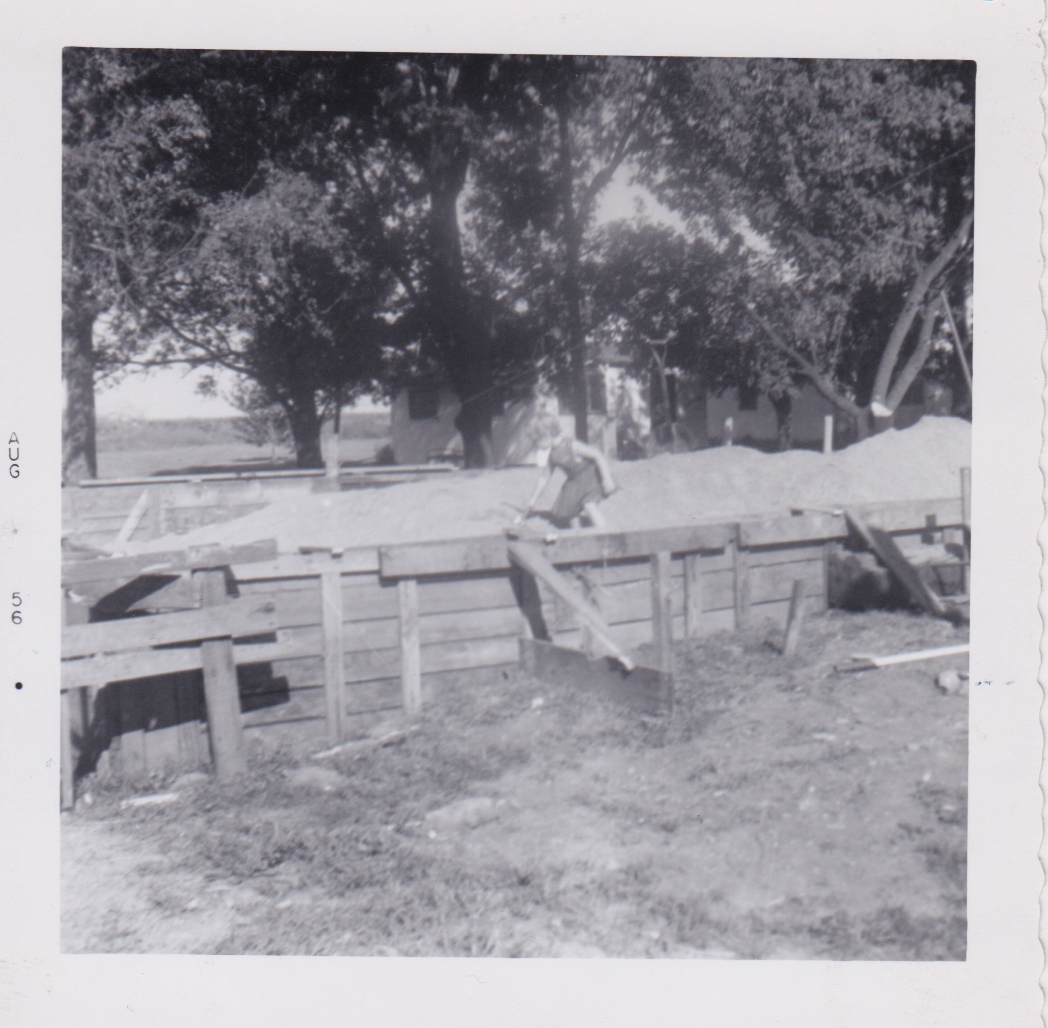
I spent lots of Saturdays with my dad(Jerry) and grandparents at the Hedrick Y, so I show up in several photos and can only speculate about how valuable my contributions were. There are a few other photos from August that depict life inside the truck stop.
My cousins and me drinking orange juice at the lunch counter.
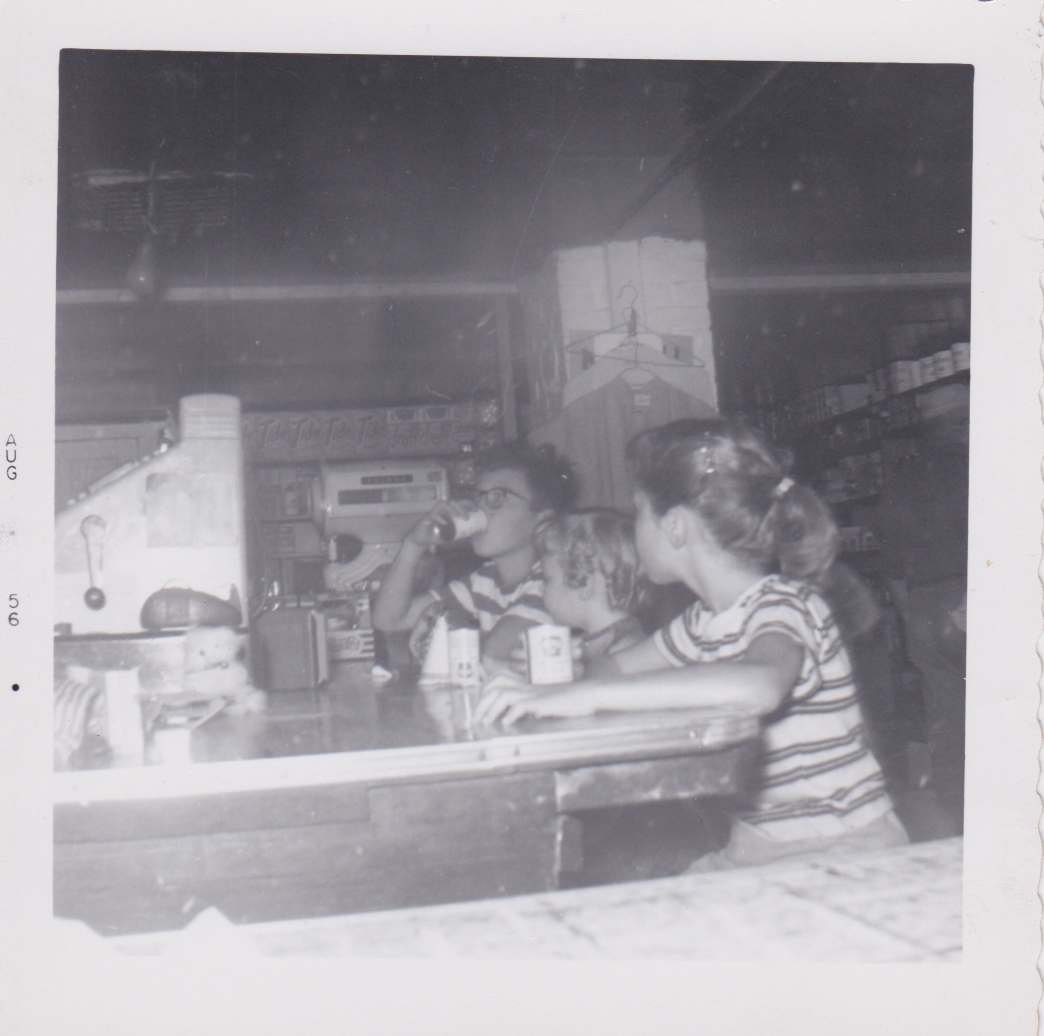
And me, shining my grandmother’s shoes.
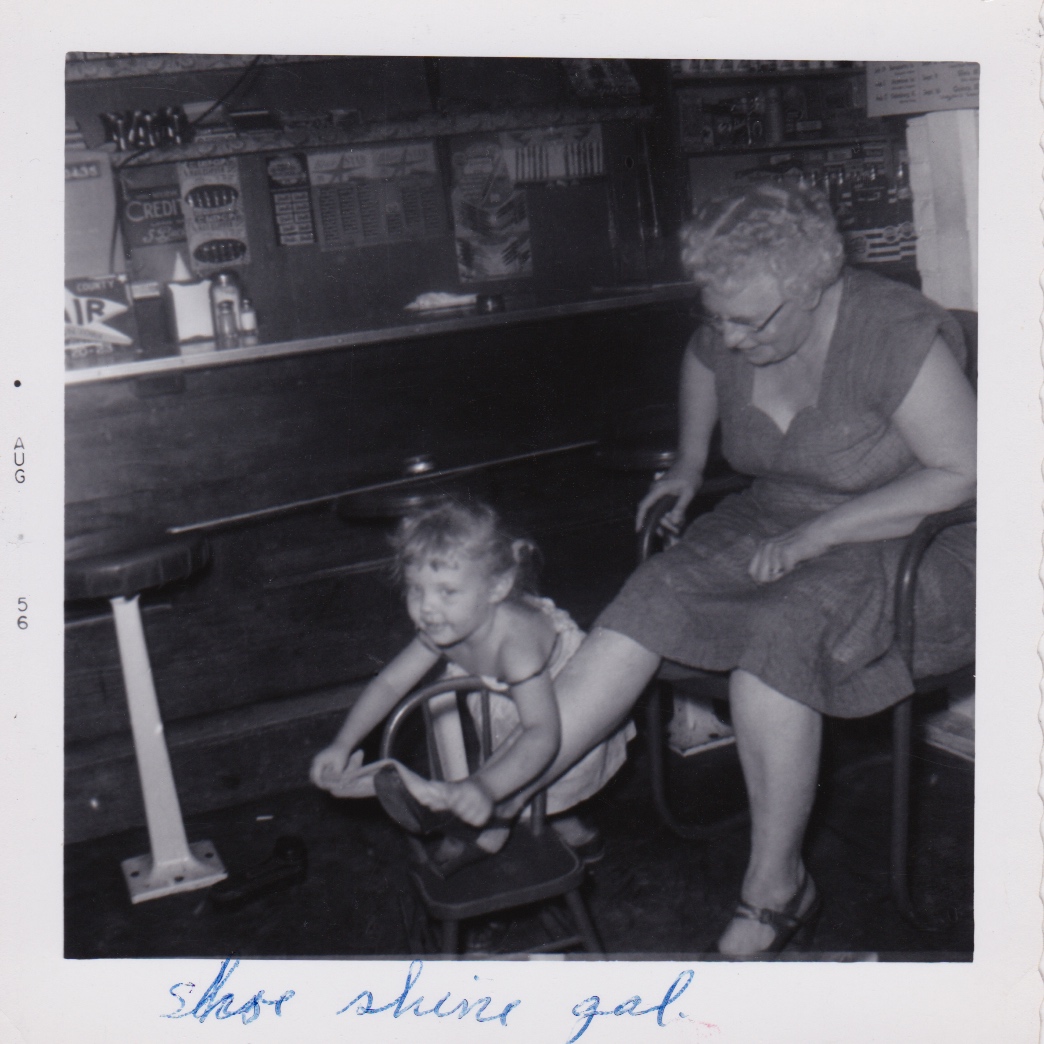
A little peek into the living quarters.

And my cousin nursing her “sick” mother. She did become a nurse, by the way.
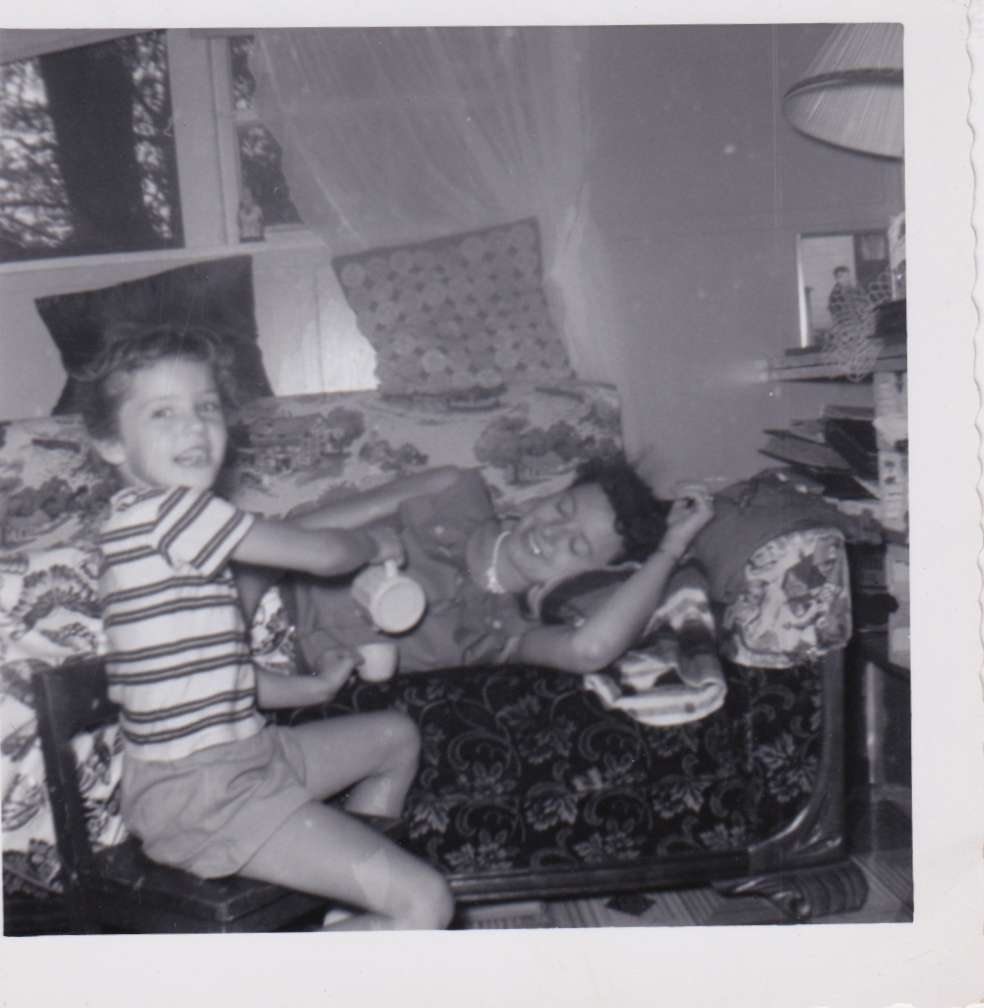
Grandma Abbie wrote on the back of some photos, so from here on, I’ll use her words as captions when I can.
How did that tractor get in there? Did Great Uncle Norman come up with the plan?
A makeshift ramp
I believe cement came next.
This looks like my dad(Jerry) kneeling in front, my grandfather bending over, and possibly Sherely Hammond (identified in other photos) on the right. I don’t know who the man on the left is.
One more photo from the “September” batch.
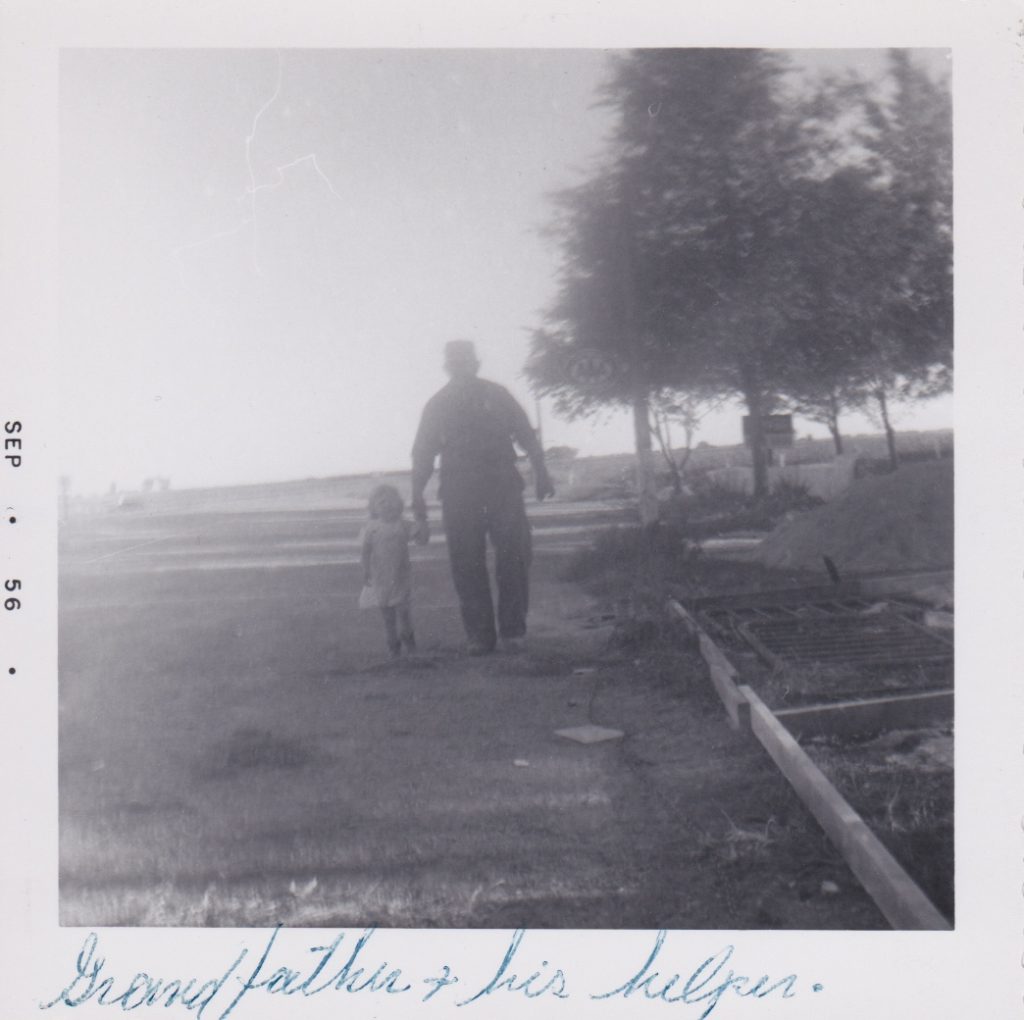
October found me hard at work.

My grandmother typed up a couple of notes about the progress in October.
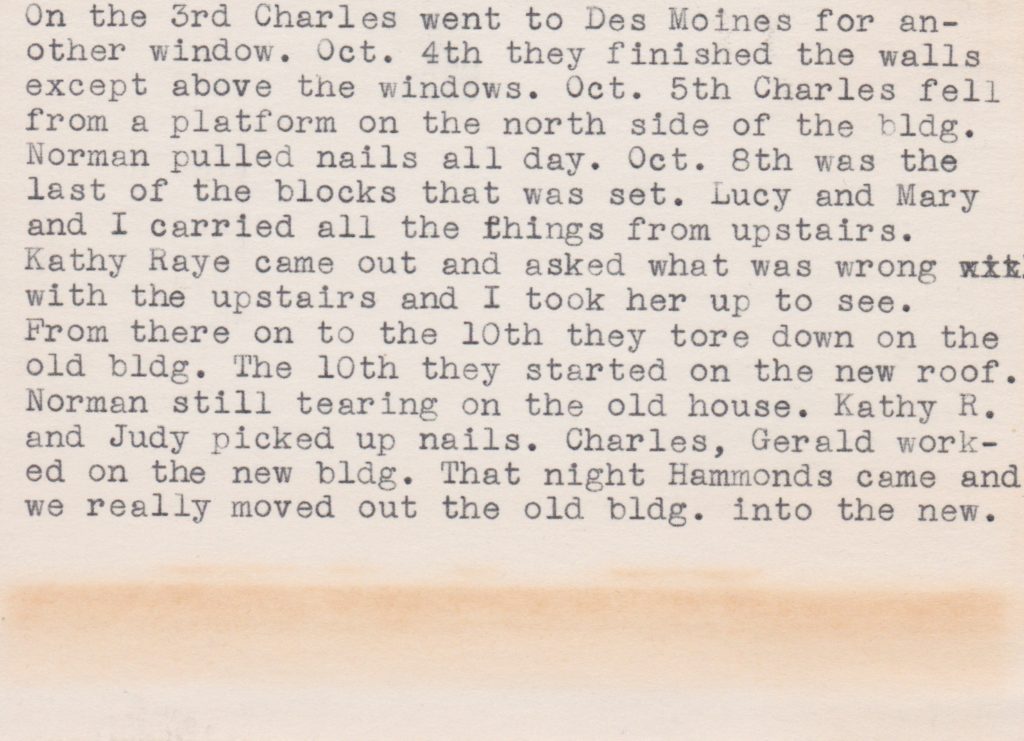
Let’s see if I can match any photos to her notes.
Around Oct. 4th. “They finished the walls except above the windows.
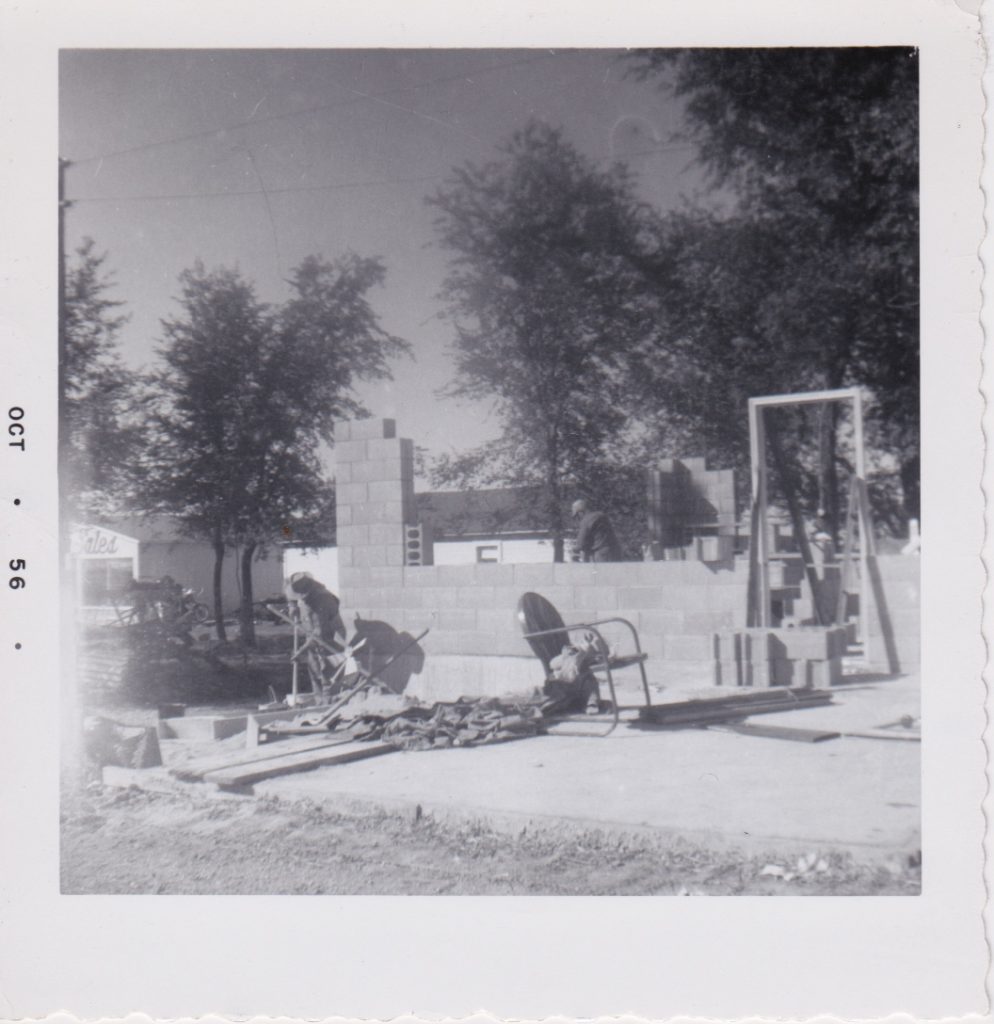
Wall with windows and door frame
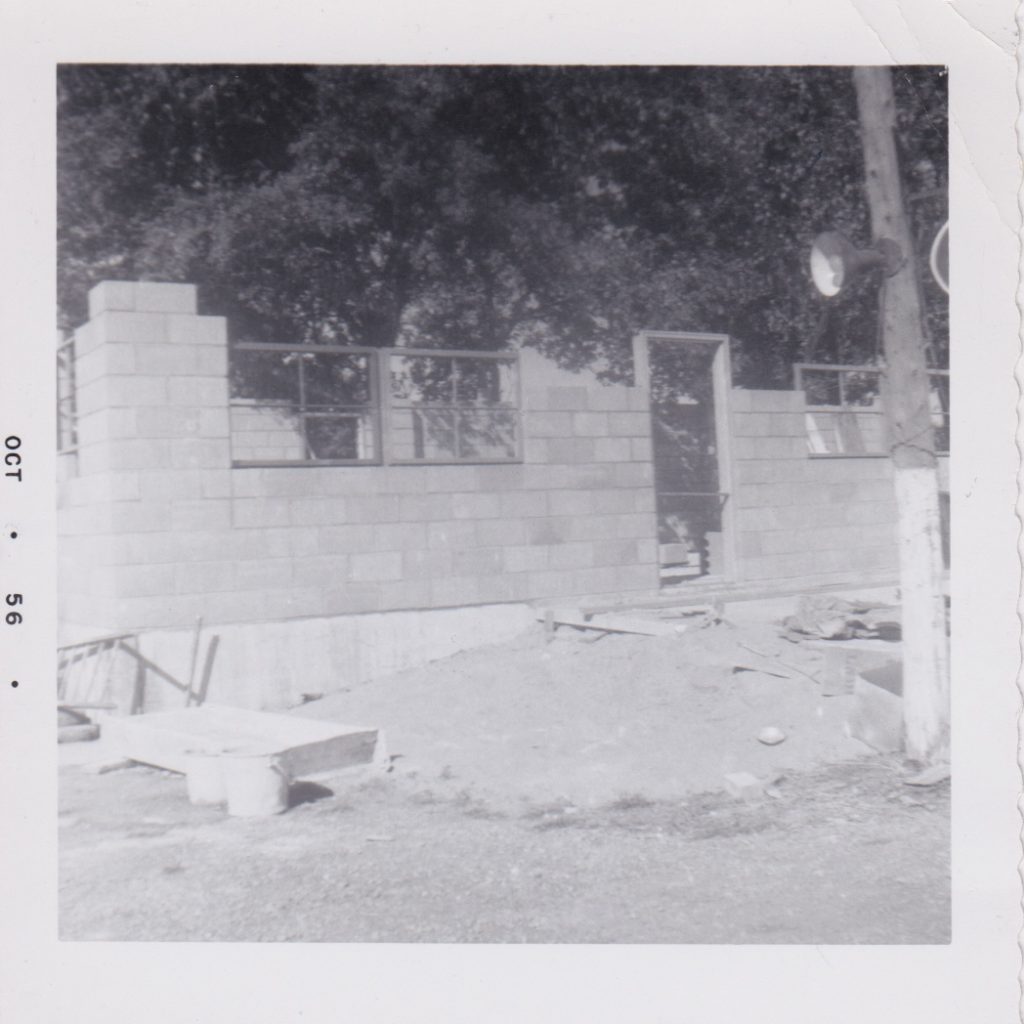
” Oct. 5th Charles fell from a platform on the north side of the bldg. Norman pulled nails all day.” There is no photograph of my grandfather having fallen from a platform, but there are a couple of pictures that look rather precarious. I don’t know which is the north side.
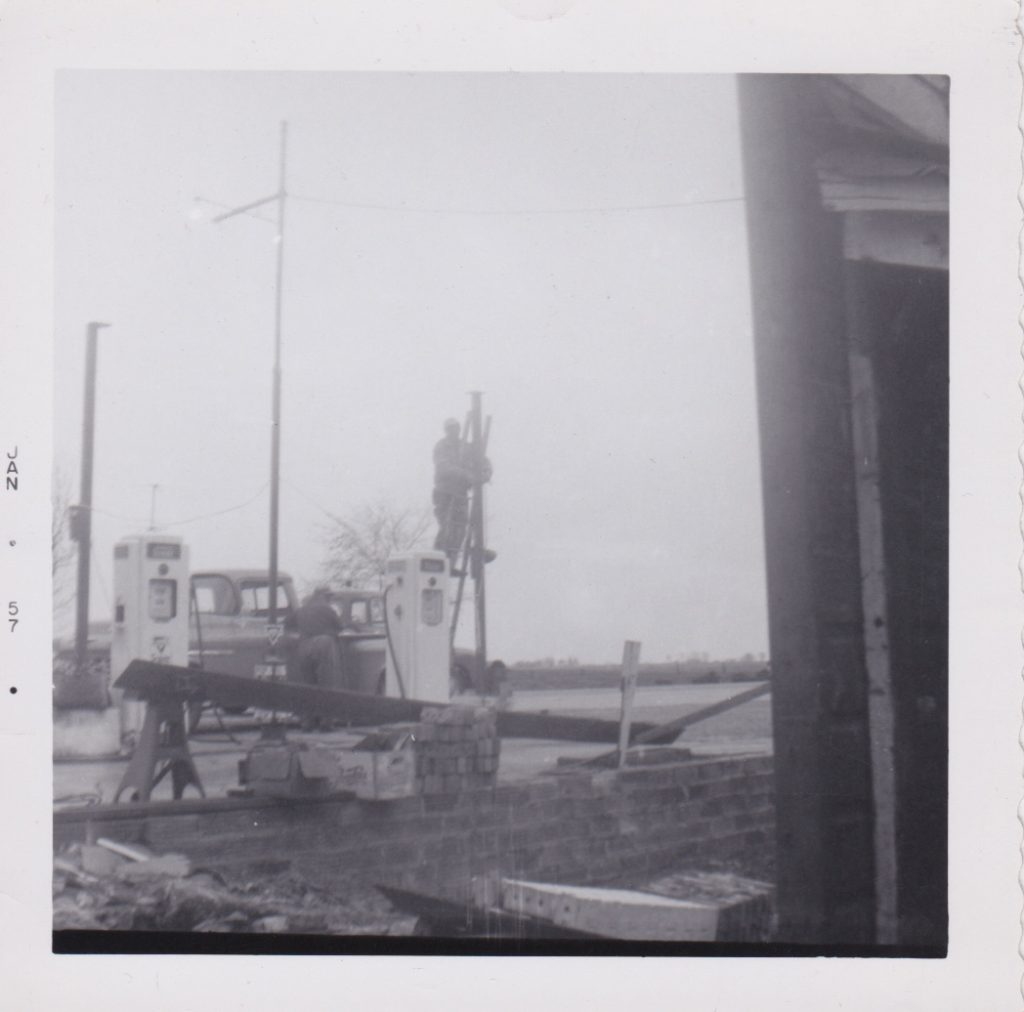
Someone on the roof. It could be my grandfather.

“Oct. 8th was the last of the blocks that was set.” No photograph seems to depict the last block being set, but several show continued progress on the new building.
Wait. Maybe I set the last block?
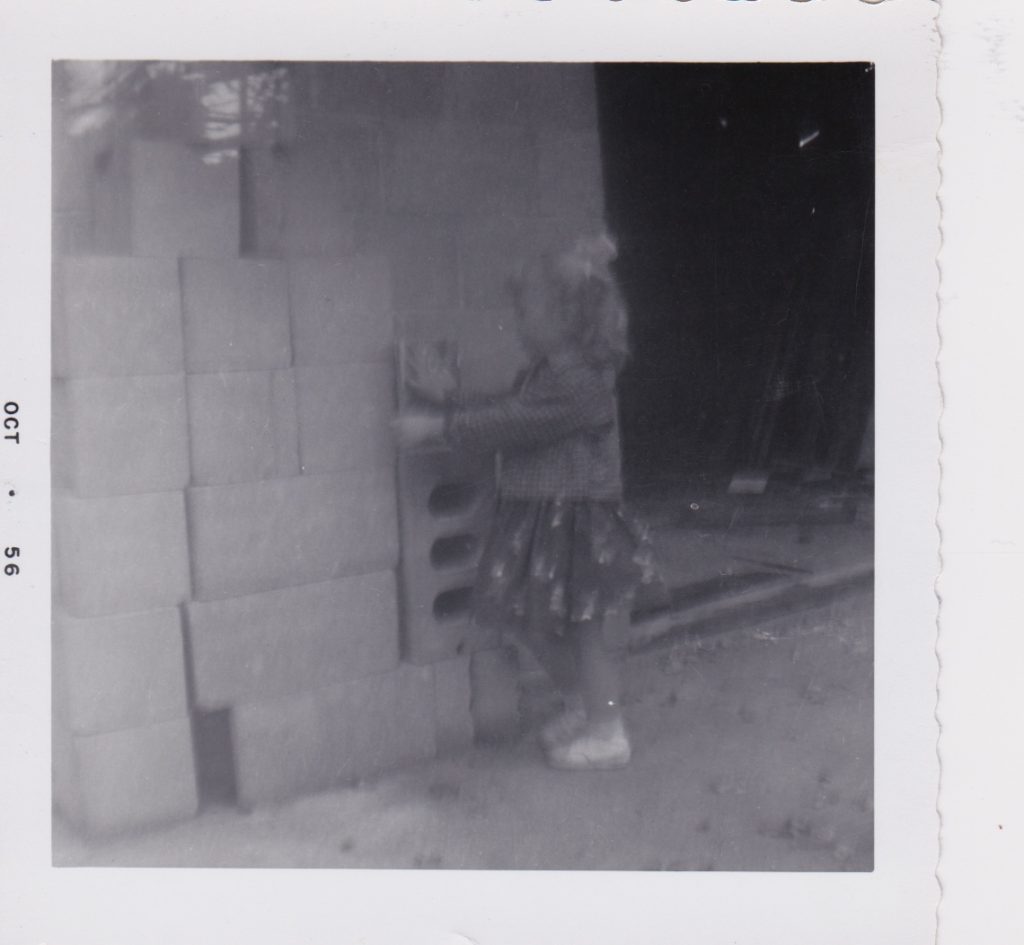
“Lucy and Mary and I carried all the things from upstairs. Kathy Raye came out and asked what was wrong with the upstairs and I took her up to see.” I don’t find a photo of the upstairs or their belongings outside, except for the phone.
“From there on until the 10th they tore down on the old bldg.”
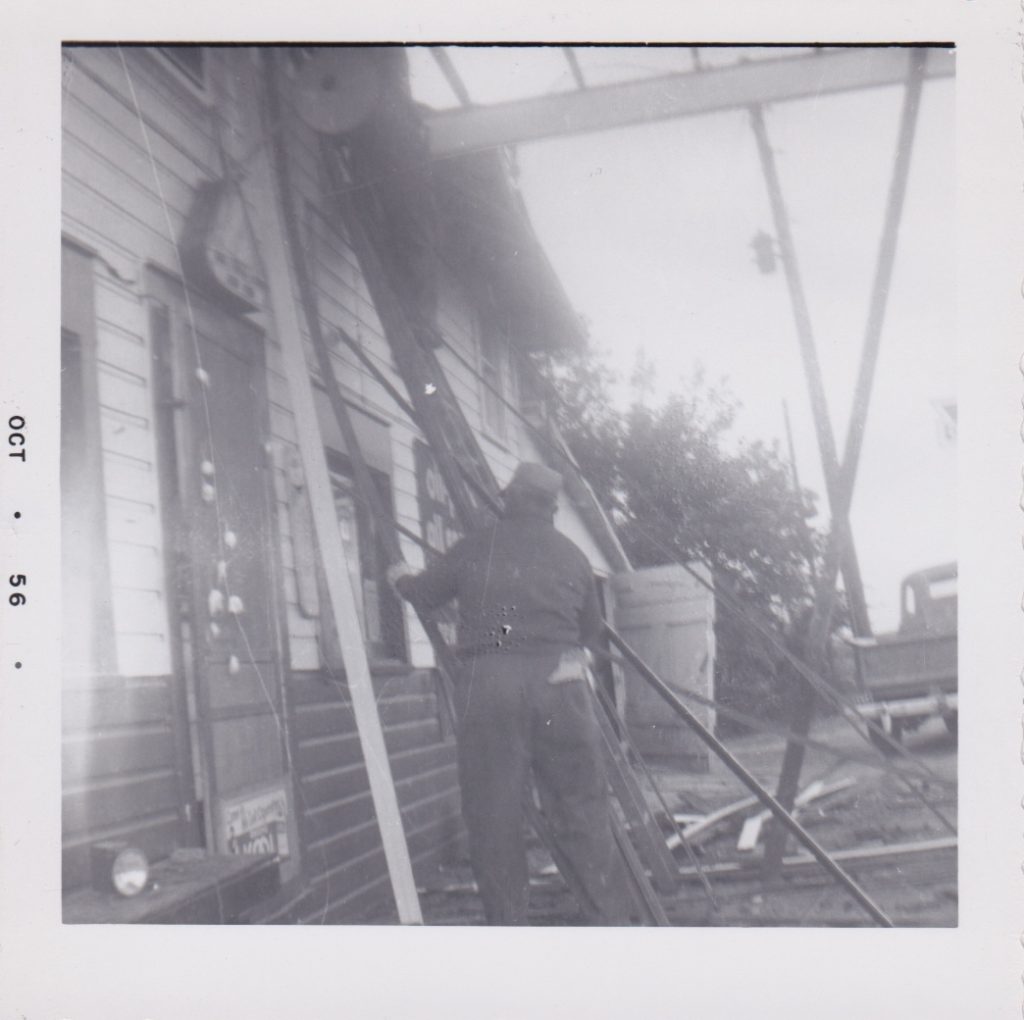
“The 10th they started on the new roof.”
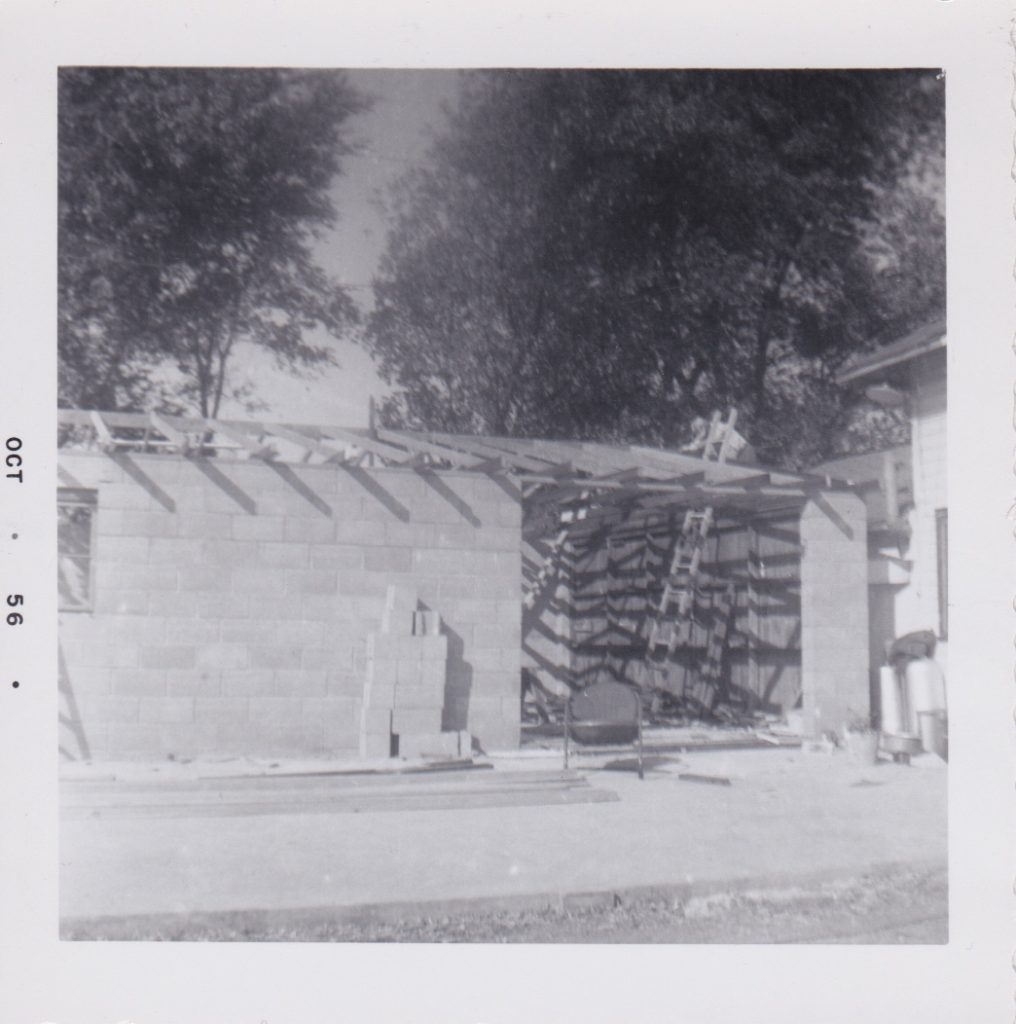
“Norman still tearing on the old house. Kathy R. and Judy picked up nails. Charles, Gerald working on the new bldg.”
I have vague memories of hanging out during all of this. My only relatively clear memory is of picking up nails. I think I used some kind of magnet-on-a-stick tool. The nails went in the box.

“That night Hammonds came and we really moved out the old bldg. into the new.
Abbie’s notes continued on a second card.
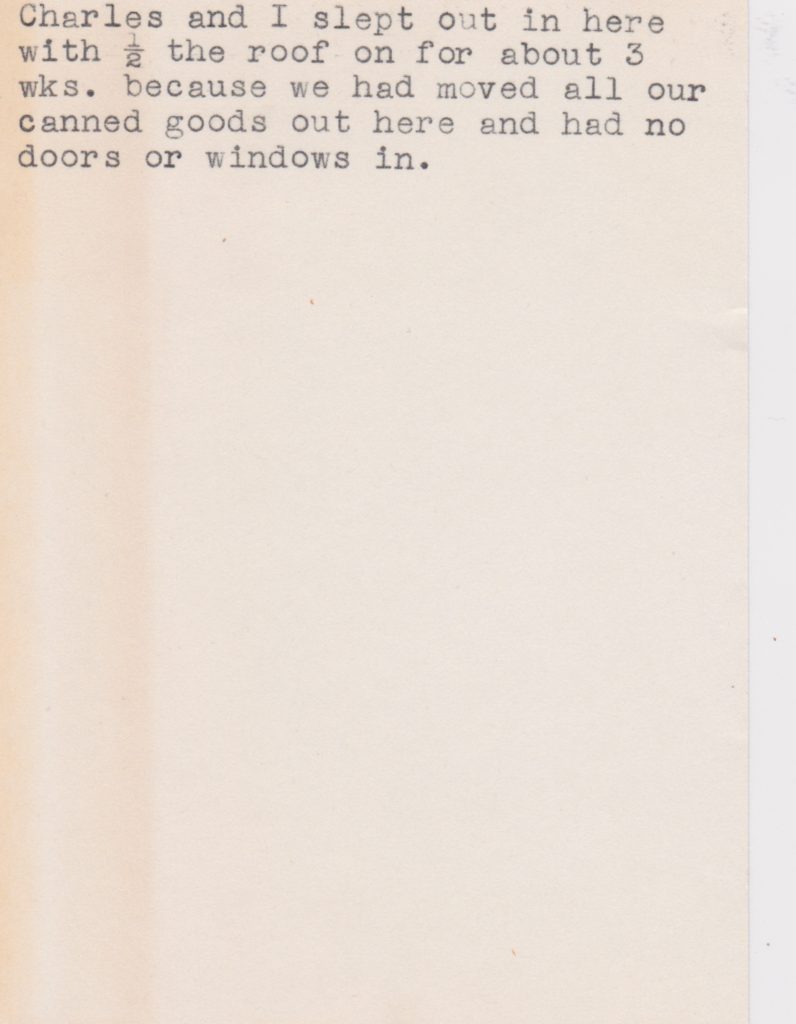
I don’t know if this note comes before or after the previous one, but I’ll guess after – even though it seems like there were some windows in, but not the door. Looks like Uncle Norman just inside the doorway. The building on the left is my dad’s motorcycle business. It says “Indian Sales” on the front.
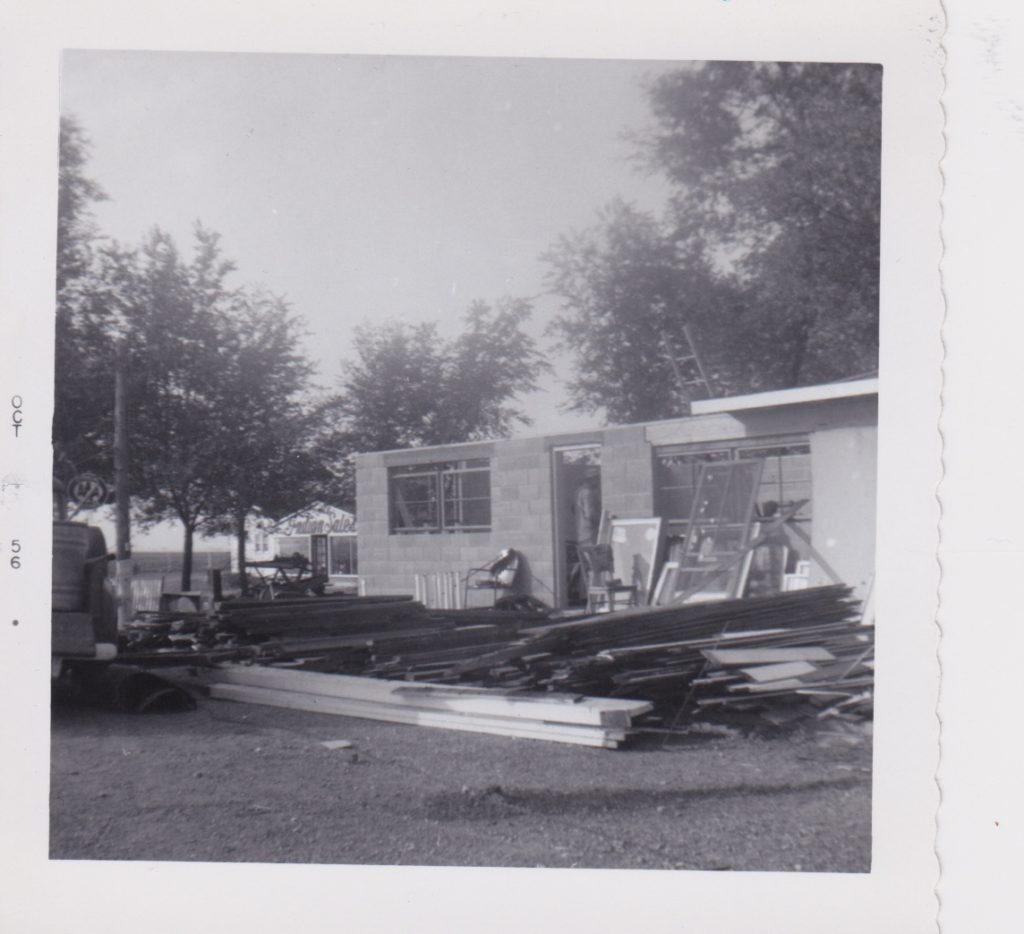
Hopefully they weren’t trying to sleep here with all that lumber to trip over – although I imagine it would deter thieves. And I’d like to acknowledge that it can be pretty chilly at night in Iowa in October.

I’m sure my grandparents needed to be frugal and reuse as much as possible. Some of those nails Norman pulled and I collected were probably reused. And this door, yet to be installed, is from the old building.
My birthday fell in the middle of October when all of this moving out and tearing down was happening, yet there are pictures of us celebrating in the house. Maybe we celebrated early?
These might be pictures of the house being torn down. Although some of them were printed in January, my grandmother wrote October 29 on the back.
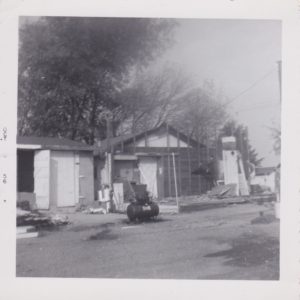
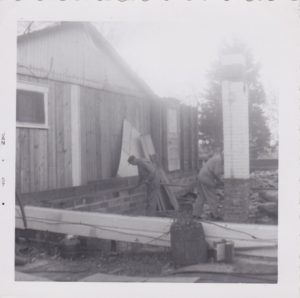
It looks like Grandma didn’t take any more film to be developed until January and February. Things were finished by then on the outside
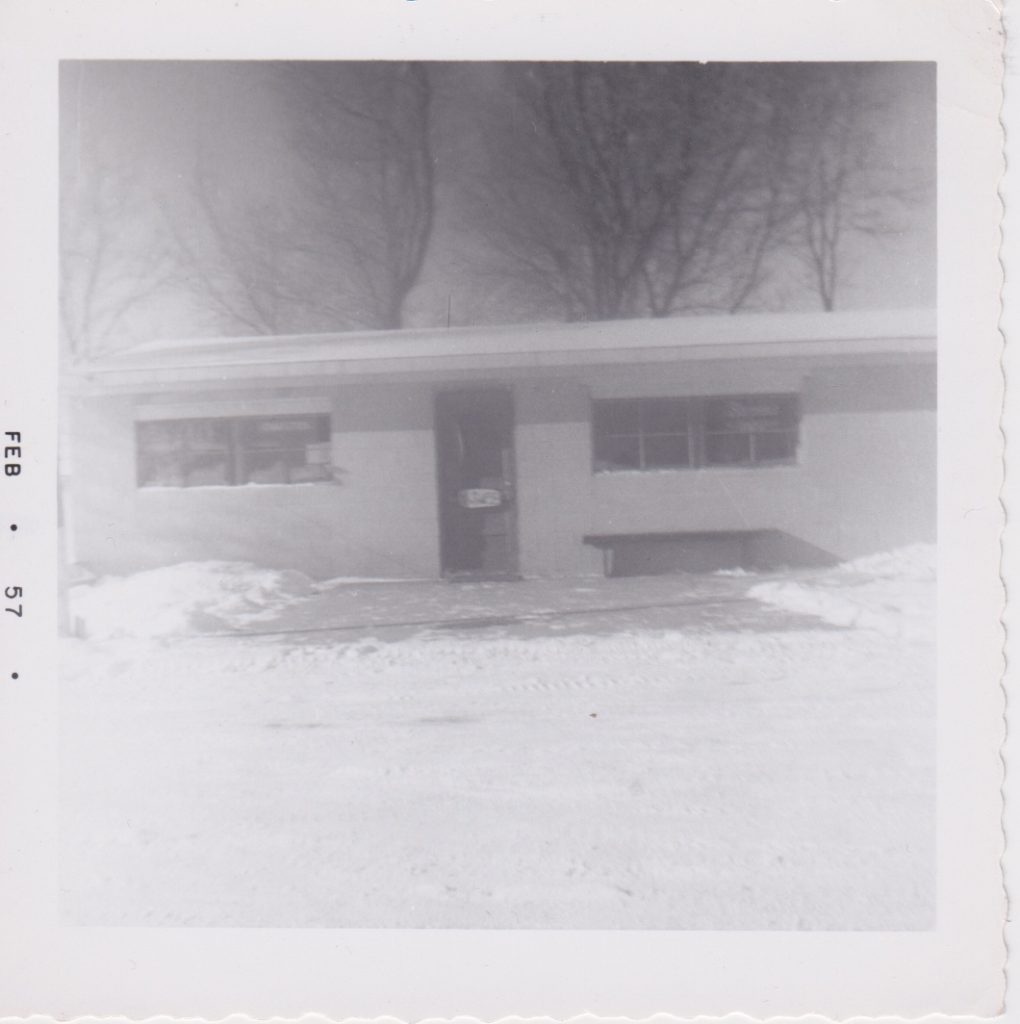
Ethel or Lucy? (When I was little I thought it was funny that one type of gas was Ethyl.)

Taking a break.
This photo appeared in the Oskaloosa Daily Herald on 30 Jan 1957.
I called my Dad today to try to fill in some gaps, but he will be 91 in two days and just doesn’t remember the details any more. I did get a little background information from him though.
Charles and Abbie had been farming for years. Prior to moving to the Hedrick Y, they were farming in north central Iowa, near the town of Clarion. Tenant farming might be the best description of their situation. They rented the land and farmed it. When they sold their product, 50% of the value of the crop went to the landowner. My grandfather owned his farm equipment.
In 1946, my grandparents sold their farm equipment and took out a loan from a bank in Richland, Iowa to purchase the land and business at the Hedrick Y in southeastern Iowa. Not long after my Dad graduated from high school that year (he stayed in Clarion to finish out the school year), he rode his motorcycle to California to visit his grandmother. While he was away, he says there was a fire that destroyed the building. He doesn’t know anything else about it since he wasn’t there. Pictures show the 1956 building looked much like the original, but with some modifications. Perhaps the damage was not that extensive and they were able to remodel rather than rebuild after the fire.
Dad recognized the names my grandmother noted on the pictures – neighbors from nearby farms and the town of Fremont. The Hammond sisters, he said, stayed with my grandparents for a month when their parents went to California and they never forgot it. He assumes that is why they were around helping so much.
There are more pictures of the Hedrick Y and I have many fond memories of time spent there, but those are for another day as this has gone on nearly as long as a construction project.
Please visit other Sepia Saturday participants and see what they have built around the theme.


